Old Salt Blog
A virtual port of call for all those who love the sea , hosted by nautical novelist rick spilman.


Remembering Charley Morgan — Legendary Sailor, Sailmaker, Yacht Builder, and Designer
It has been said that Charley Morgan is the only person to ever single-handedly design, build, and skipper his own 12 Meter in the America’s Cup . Prior to and since Charley’s 1970 Cup attempt, all campaigns were organized by large syndicates. He even sailed the boat on its own bottom from St. Petersburg, Florida to Newport, Rhode Island to compete in the 1970 America’s Cup Defender Trials.
As a high school student in St. Petersburg, I recall the excitement as Morgan built and competed in the 12-meter yacht Heritage , only to be beaten by Intrepid skippered by Bill Ficker. Although “Ficker was quicker,” the New York Times commented that “Heritage, designed, built and skippered by Charlie Morgan Jr., won first prize in the beauty contest. Her golden mahogany hull glistened in the hot sun light and her light‐air spinnaker was the prettiest seen so far, a top‐to‐bottom dazzler of blue, orange and white.”
Ironically, Heritage , built by a pioneer in production fiberglass sailboats, was the last America’s Cup competitor to be built of wood.
Like so many Floridians, Morgan was originally from somewhere else. Born in Chicago in 1929 and raised on the West Coast of Florida, he attended the University of Tampa and took a job with Johnson Sails, located at the Jean Street Shipyard on the Hillsborough River. In 1952 he founded Morgan Racing Sails in Tampa, FL.
Developing an interest in yacht design, Morgan’s first well-known boat was the 40′ fiberglass centerboard yawl Paper Tiger that won the Southern Ocean Racing Conference in 1961 and 1962. Unable to find a builder for Tiger Cub , a smaller version of Paper Tiger , Morgan founded Morgan Yacht Corporation in 1965.
Morgan Yachts produced sailboat models from 24 to 45 feet long. Its most successful model was the Morgan Out Island 41, a shallow draft cruiser designed for the charter industry. Both loved and hated, the design was referred to as one of the very first “charter barges,” or “the fornicatorium ,” as Morgan himself once put it. The Out Island 41 has been described as the “most popular boat over 40 feet overall ever built.”
In 1968, he sold Morgan Yacht Corporation to Beatrice Foods, providing funds for Morgan to design and build the wooden 12-meter yacht Heritage . He went on to found Heritage Yacht Corporation in 1975, producing trawlers and sailing yachts.
I met Charley Morgan only once when I stopped by his office in Pinellas Park to give him a copy of a CAD drawing I had done of his Out Island 41 for a naval architecture design class at the University of Michigan. He was appreciative and gracious to the bearded fanboy who had arrived unannounced at his door. Only after I graduated and took a job in the Northeast did I realize that Morgan also lived on the Isle of Capri in Treasure Island, FL, where I lived when I was in high school.
He would also later design trawlers for Chris Craft and sailboats for Compac. In his career, Charley Morgan designed 57 sailboats.
As an indication of his versatility, Morgan also built a fleet of more than a hundred watercraft for Disney World, the largest of which was around 120 feet—submarines, jungle cruise boats, the steam launches.
Charley Morgan 1970 America’s Cup Clips. Heritage
Remembering Charley Morgan — Legendary Sailor, Sailmaker, Yacht Builder, and Designer — 2 Comments
I was a owner of a Heritage racing boat built by his company. I ended up selling the boat because of a job change but kept in touch with Charlie over the years. He was a great person, that once you met him, he made you feel like you knew him all your life. May he & his wife rest in peace.
Charley and Maurine were class act. I was honored to host them at my home twice. He spoke of my Ted and he being like kids in a sand box designing sailboats. RIP to Charlie and Maurine.

- Sails & Canvas
- Hull & Structure
- Maintenance
- Sailing Stories
- Sailing Tips
- Boat Reviews
- Book Reviews
- Boats for Sale
- Post a Boat for Sale
- The Dogwatch
- Subscriptions
- Back Issues
- Article Collections
- Free for Sailors
Select Page
Charley Morgan and the Fiberglass Factory
Posted by Daniel Spurr | Sailing , Sailor Profile
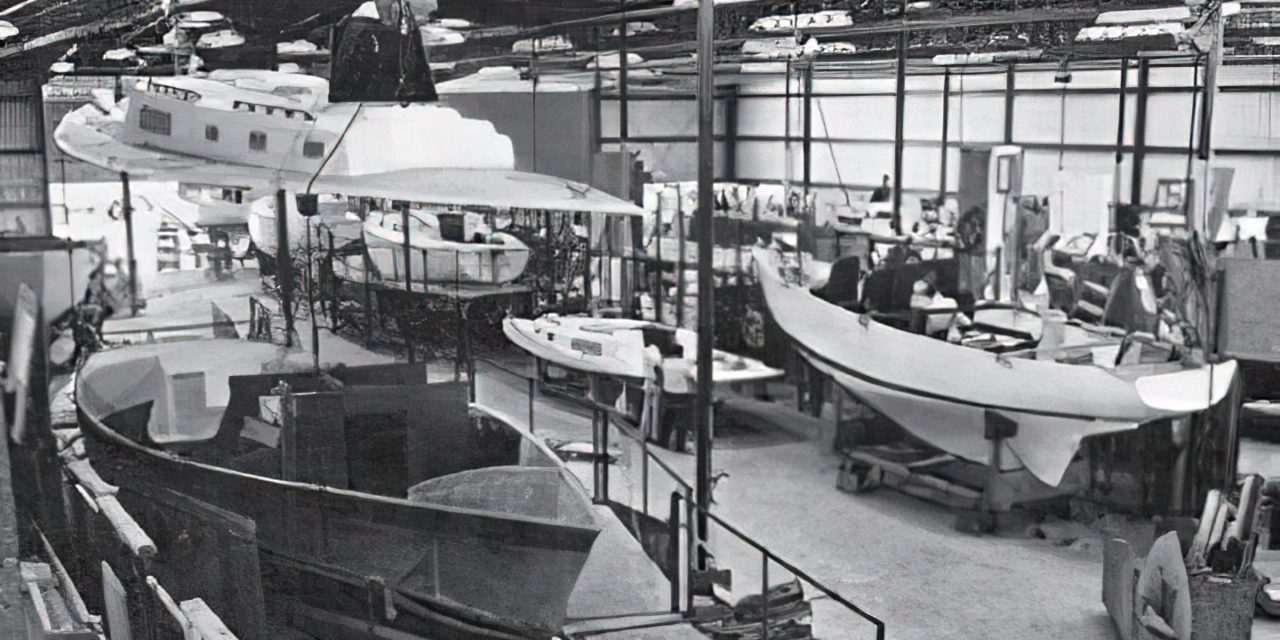
Charley Morgan — 1929-2023
Sailing legend Charles E. Morgan (Charley to his friends, which was just about everyone) passed away January 6, 2023 on Treasure Island, Florida, at the age of 93, mere hours after the passing of his wife Maurine.
The following Good Old Boat article that I wrote in 2005 tells the high-points of Charley’s illustrious career but, he deserves emphasis for a few of the most notable:
- Longtime designer, builder of custom and production sailboats, and sailmaker.
- Probably the only person in the long and storied history of the America’s Cup to design, finance, build, skipper, and make the sails for a Cup boat — Heritage .
- Winner of two SORC (Southern Ocean Racing Conference) events in boats he designed, built, and skippered (1961 and 1962).
- Revolutionized the Caribbean charter trade with the Morgan Out Island 41, of which more than 1,000 were built.
And a genuinely good guy. RIP, Charley.
– Dan Spurr
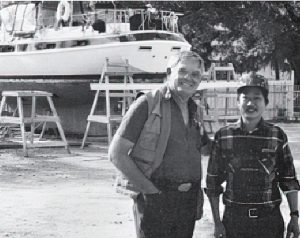
Charley Morgan, left, with Paul Benfield, owner of the Tibbets Boatyard. Behind them is a Morgan Out Island 51.
He found the best way to win was to build his own boats
Florida, like California, with its eternally warm weather and friendly skies, is a natural place in which to build boats — and was especially so back in the early days of fiberglass when hulls were cured outdoors using sunlight as the catalyst. A cheap labor pool also was available. Boatbuilders sprang up on both Florida coasts — in Miami and in the Tampa-St. Petersburg area. Many are still there, not on the water where real estate is too expensive but — as in Costa Mesa, California, the Mecca of 1960s fiberglass boatbuilding in this country — inland, back in the dusty, nondescript industrial zones next-door to plumbing and building supplies.
Charles Morgan, born November 17, 1929, in Chicago, now a yacht designer and consultant, hasn’t built a sailboat in many years, but during the late 1960s and through the 1970s he was a formidable force in the exploding fiberglass sailboat industry. He was the designer of Heritage , a 1970 America’s Cup 12-Meter; the designer and builder of Paper Tiger , winner of the prestigious Southern Ocean Racing Circuit (SORC); a production boatbuilder of Morgan Yachts; and an independent designer and consultant. He’s done it all.
Aeronautical engineer
Charley Morgan grew up on the west coast of Florida messing about in boats and went to college close to home, first to Valencia Junior College in Orlando and then to the University of Tampa, where he planned on being an aeronautical engineer. Following graduation he worked a short time for a telephone company before getting sidetracked by sailing.
“I went queer for boats,” he says, explaining why he took a job at Johnson Sails in Tampa and then opened his own loft, Morgan Racing Sails, in 1952 in St. Petersburg.
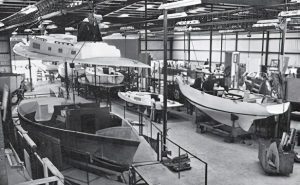
At Morgan Yachts’ St. Petersburg, Florida, facility, men worked from scaffolding on boats of all sizes. Note how the decks were moved and positioned from overhead beams.
Rust, shatter, and rot
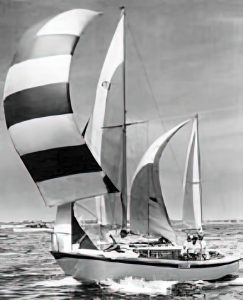
Charley Morgan’s first boat, Brisote. Demonstrating considerable resourcefulness, she had a Star Boat keel and rudder, a Thistle mainsail, and a modi- fied Penguin sail for a mizzen.
Charley built the hull and deck himself, with help from a young aerospace engineer named John Mills. Charley recalls stopping by the local yacht club one day after finishing work at the shop. “The old savants were sitting in the club, and I came in with resin all over me. One of the guys said, ‘I under- stand it’s got a steel backbone, wooden decks, and a fiberglass hull; you know, it’s gonna rust, shatter, and rot.’ ”
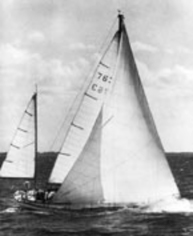
Paper Tiger was perhaps Charley’s most famous design. She won the SORC for two consecutive years, in 1961 and 1962.
Clark Mills, designer of the International Optimist Pram and the Windmill, finished Paper Tiger for Jack Powell, for whom Charley had designed her. But at first Clark was skeptical. When Charley showed him the boat, Clark hooked his thumbs in his pockets, chewed on his stogie, cocked his head, and said, “Well darn- it, I’ve built boats from scratch, kits . . . you name it. But this is the first time someone’s brought me a coat of paint and asked me to build a boat inside it.”
History will not forget what that “coat of paint” accomplished. In an unprecedented feat, Paper Tiger twice took overall SORC honors in 1961 and 1962.
Charley next designed the 28-foot Tiger Cub and began looking for a builder. The search proved futile, so he did the only logical thing he could — he formed Morgan Yachts and built them himself. They were all essentially one-offs, that is, they were not built from the same reusable mold.
The Tiger Cub later became the Columbia 31, but that didn’t happen until after Dick Valdes and Vince Lazzara put Charley’s 40- foot Sabre into production as the Columbia 40, a generous move by Vince which was intended to help Charley launch his own business.
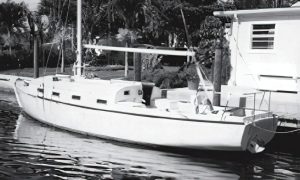
The one-off Rare Aves, the first fiberglass boat Charley ever saw, inspired him to build Paper Tiger out of the same new material. Rare Aves still sails today from her home port in the Florida Keys.
Lost the Circuit
The speedy centerboarder had nearly won the 1964 SORC and looked to be a good bet for the general market. “We won the Nassau Race and the Lauderdale Race,” Charley lamented years later, “and still lost the Circuit, if that’s possible.”
Also that year he built what he says was then the world’s largest fiberglass sailboat, the 60-foot Maredea , whose hull form was tank tested. The result: first place in the St. Petersburg-to-Venice, Florida, race.
In 1965 business was so good the company temporarily stopped taking orders. They were building a wide range of boats, from the $995 Wind- mill to a $44,900 45-footer. Gross that year was $1.7 million. Unlike a lot of builders, Charley handled finances well, once remarking, “Nothing leaves that driveway out there unless and until it’s paid for.”
Charley’s childhood friend, Bruce Bidwell, joined him that year and together they introduced the Morgan 34, which the ads described as “an immediately successful racer/cruiser and an attractive, beamy, keel-centerboarder, CCA-style yacht . . . for families for whom yachting is a way of life.”
The Cruising Club of America (CCA) rule attempted to encourage designs that would be safe, comfortable family cruisers as well as decent performers on the racecourse. Notable features included short waterlines (the long overhangs would immerse when heeled to increase sailing length beyond the measured length), large mainsails and small foretriangles (partly because big multispeed winches hadn’t been developed yet). These boats were often yawls because the mizzen staysail was essentially unpenalized by the rating rule. A lot of them were centerboarders because shoal draft was important in Charley’s native waters of south Florida.
Smaller wetted surface
In the Morgan 24, the rudder was separated from the keel-centerboard — a major step forward in yacht design. Charley wasn’t the first to do this, but the Morgan 24’s racing record helped to validate the idea. Not only did the emergence of the fin keel help the boat turn more quickly in prestart maneuvers, it also greatly reduced wetted surface area, which meant less friction and, therefore, faster speeds.
The Morgan 24 is still a good performer by today’s standards, with moderate displacement and shoal draft. And — priced around $5,000 — it’s a terrific value for anyone looking for a boat in this size range.
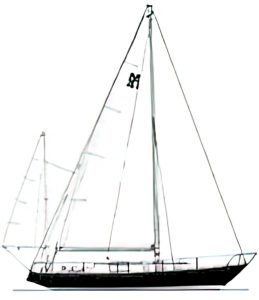
Morgan 41 Illustration
Other boats to follow included the Morgan 30, 41, and 45, which later was built as the Starrett & Jenks 45. But it was the development of the Out Island series — 28, 33, 36, 41, and 51 — that gave the company a big burst of business.
Charley’s interest in racing never waned, though, and he continued to de- sign and build custom boats. One was Rage , which he, with Halsey Herreshoff as navigator, took to second place in the 1968 Newport-to-Bermuda race.
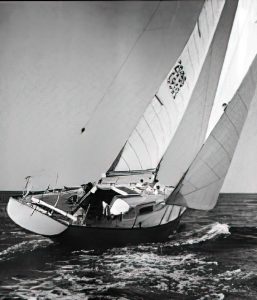
The Out Island series
“The Morgan Out Island 41,” Charley says, “was the extension of a long study period, where we tried to create a commodious and comfortable tri-cabin arrangement. In 1970 we finally got it worked out — human engineering and ergonomics. We designed and aimed it at cruisers as well as the charter-boat market. We sought input from a lot of companies big and small, including the Moorings and Jack Van Ost [a dentist who became a successful builder of CSY boats for his charter business].
“The boat was designed to compete with the boats being put out by Gulfstar, which were for a new market that Vince Lazzara [who by now had left Columbia in California and started Gulfstar in Florida] had perceived. Our dealers had requested for a long time a boat without a centerboard that was shoal with lots of room; it didn’t need to sail like a rocket. It came out at the Annapolis Boat Show and was an instant sellout. We built, in the first calendar year, over $4 million worth — 120 units. Eventually we built those boats on two lines, with them coming off the combined lines one a day. They number in excess of 1,000.”
In all, Morgan Yachts built more than 40 different production models, beginning with Charley’s trademark centerboarders, the Out Islands, the Henry Scheel-designed 45/46 (originally built by another builder as the Scheel 45), and a number of boats designed to the International Offshore Rule (IOR), including the Morgan 33 ¾-Ton and Morgan 36 One-Ton. Sailing Kit Craft made a number of designs avail- able in kit form because, as Charley says, “there were so many people who wanted to get a hold of one of our boats who couldn’t afford a finished boat.” But along with a handful of other 1970s builders, such as Islander and Columbia, Morgan Yachts dropped the practice because many owner-completed boats were poorly finished, reflecting adversely on the manufacturer.
Retirement day
Charley remembers well the day he retired. It was June 6, 1972, he recalls with certainty. It was easy to see that divorcing himself from the company he’d created was a watershed in his career . . . and life. He’d merged the company into Beatrice Foods four years earlier (1968) and had stayed on as chairman of Morgan Yacht Corporation. But for Charley, like many people, working for a large corporation was difficult after he had been in business for himself.
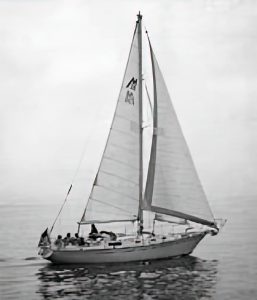
Later, Beatrice Foods sold Morgan Yachts to Thor Industries. Subsequently, in 1984 it was passed along to Frank Butler and Catalina Yachts, which continued to build the Morgan 38 and the Out Island 41 (Classic 41) for a number of years before finally putting them to bed.
Of Morgan Yachts’ many accomplishments, one that makes Charley positively beam is the boats he built for Disney World long before it got into the cruise business. “There was a time we built the largest fiberglass boats in the world,” he said. “Morgan Yachts designed and built the principal original watercraft for Disney World, a whole fleet of them, the largest of which is around 120 feet — sub- marines, the jungle cruise boats, the steam launches. In all, more than a hundred. It’s exciting the way you can completely create out of glass some- thing that looks like wood; on the submarines we faked the scales and rivets. We created an incredible theatrical appearance for Disney.”
Charley also designed motor yachts such as the West Indian 36, a hover- craft, and Heritage , the last wooden American 12-Meter ( France II was the last in wood among all nations). Alas, Heritage lost to Intrepid in the 1970 defender trials.
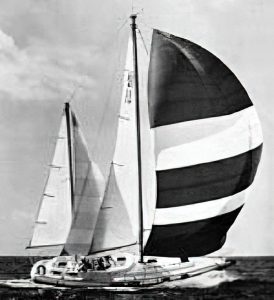
Between 1971 and 1984 more than 1,000 Morgan Out Island 41s were built. Later, after Catalina Yachts acquired some Morgan molds, the 41 was resurrected with minor modifications and sold as the Morgan Classic 41.
Way of measuring
Cindy Goebels, reporting in Southwinds magazine, said Charley ex- plained his interest in the America’s Cup thus: “It’s all just another way of measuring yourself. Competitive men always want to know how big they are in relation to others, how they can perform. Dollars are a way of keeping score. There may be other means in a more mature society. Why this? Well, there’s damn little you can justify out- side of wanting to keep on breathing.” Charley Morgan was always a good interview, seldom mincing words.
Morgan Yachts’ St. Petersburg facilities were considered modern and first-class. “We maintained a laboratory and did a lot of outside testing,” Charley says. “We were using balsa cores from the beginning. Later I was a great proponent of Airex. Then came Divinycell, Klegecell, carbon fibers, Kevlar, and the utilization of high- modulus materials. Way back in 1965 and 1966 we were researching work done in the aircraft and aerospace industry. But those materials had no place in yacht building in those days because lightness was not the key- note; the economic issues were more important . . . and the ability to have readily available resources.”
Charley likes to talk about how the advent of fiberglass changed the face of American boating. “You didn’t have to be an extremely wealthy person to think about owning a boat,” he says. “The concept of the non-wasting asset. You could treat ’em and deal ’em like automobiles. You had an orderly market and the burgeoning charter boat and used-boat market. It just altered completely the brokerage firms. Back in the days after the end of World War II, you could count on your fingers the brokerage firms: S&S, Northrop & Johnson. Bang, bang, in one fell swoop, the tides changed and ripped over us.
Dramatic change
“The thing that kept coming through to me was the dramatic change that was made by fiberglass and the huge opportunity given to the American boater.
“Look at the Ensenada Race – all the ones going down to Mexico – huge clusters of boats! In the Great Lakes, the Mackinac Race had a few entries before the war, but bang! At the end of the war they started getting some fiberglass boats on the scene – my word! — you’re looking at 100-boat fleets or better. It made a major change for Americans who wanted to become part of sailing and yachting. Our ad used to say, ‘The past decade’s most exciting new construction medium.’ How prophetic those words were.
“What sort of disturbs me these days is when they tag the sailing boat people as elitist. I like to say that they’re really more dedicated and enthusiastic about their sport and therefore have organized it more so it has the appearance of elitism.
“The only boats I’ve seen break up are some racing boats that were really lightly built, crossing the Stream or something. I’ve traced a few of those stories about boats splitting in two – bull! I’m sure there are some examples, but the truth is that fiberglass is marvelous.”
And of the strength and longevity of fiberglass?
“I hate to tell you how quickly a wooden boat goes down. We crossed the finish line down in Sarasota after getting chewed up in a nor’wester at the crack of dawn. We could see the committee boat in the murk, saw her lights and the farewell marker at Sarasota Pass. We went zooming by, struck the chute and mizzen staysail, jibed over, cranked up the engine, cleaned up the forward deck and started banging through the slop up toward the pass. Dawn had come. I looked up and yelled, ‘Hey, look! There’s some spreaders sticking up out of the water.’ The committee boat broke its line, blew up on the bar, popped like a cantaloupe, and went straight to the bot- tom. Pieces floating; heads bobbing around and lifejackets. She went down that fast. You kidding me?
“Yet I saw a whole night when [the fiberglass sailboat] Inferno sat over on the bricks at Lucaya [Grand Bahama] banging and slamming and scream- ing and moaning on those bricks. My heart was going out to that boat . . . the sea bursting over her. Three days later I saw her hauled out at Spencer’s in Palm Beach, and I went over and got up inside the boat, looked at the keel – gnawed up a little bit. Not bad!”
Another company
Guys like Charley Morgan are never really retired, even though they sometimes think they are. In 1975 he started yet another boatbuilding company, the Heritage Yacht Corporation. Perhaps anticipating the trend toward power, this time he built both fiberglass sailboats and trawler motoryachts. That venture wasn’t as financially successful, however, and he was forced to seek protection from creditors under Chapter 11 of the federal bankruptcy code. Subsequently, in the early ’80s he served for a short time on staff at Chris-Craft, while the remaining assets of Heritage went to Catalina, which had also bought Morgan Yachts from Thor Industries.
Today, Charley keeps a design studio in his home. Recent projects include two long-range motoryachts, one steel, the other aluminum, by Top- per Hermanson. But, he says, new de- sign commissions have fallen off considerably since 9/11. He says, “I’d love to do a full-powered steel auxiliary for the right person. Totally self-sufficient with watermakers, air-conditioning, whatever they want.” Like a lot of other people in the industry, he sees his aging followers taking an interest in the comforts of motoryachts, but not all want to go to sea without some sort of stick overhead.
To fill his time, Charley is teaching himself painting, taking after, in a reverse sort of way, his son and daughter, who are both artists.
And, of course, he still finds time for sailing. He was active in the local Star fleet until his wife became ill six years ago; he nursed her until her death in February 2001.
But, he says, he’ll do his yacht club’s Mexico race this year, and there’s always the Morgan Invasion, a rendezvous for owners, in which he participates.
Last October, the 19th annual Invasion was held at the Treasure Island Tennis and Yacht Club in Treasure Island, Florida. The event coincided with Charley’s 75th birthday. More than 100 boats participated. Nothing makes a designer or builder happier than seeing his boats still going strong and his owners happy. One of his favorites, Paper Tiger , recently resurfaced in the West Indies,” he says with pride. “And she’s till honkin’.”
So, too, one might add, is Charley Morgan.
Note: This article is a revised version of information included in Heart of Glass: Fiberglass Boats and the Men Who Made Them , by Dan Spurr.
About The Author
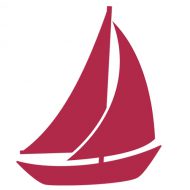
Daniel Spurr
Dan Spurr is a contributing editor with Good Old Boat and editor-at-large with Professional Boatbuilder. He is the author of seven books on boats and sailing and was formerly senior editor at Cruising World and the editor of Practical Sailor.
Related Posts
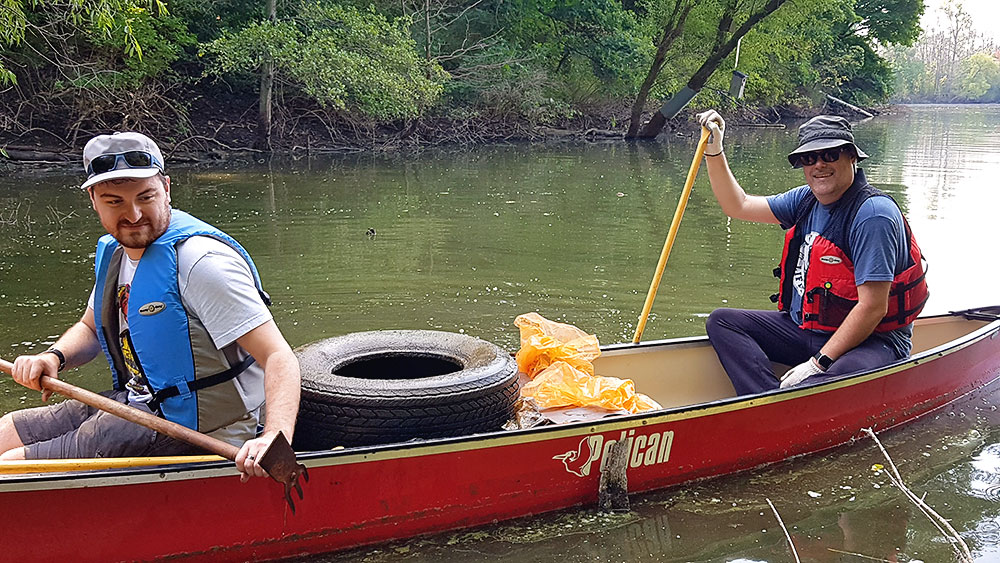
Sailor of the Month: Lee Brubacher
December 14, 2019
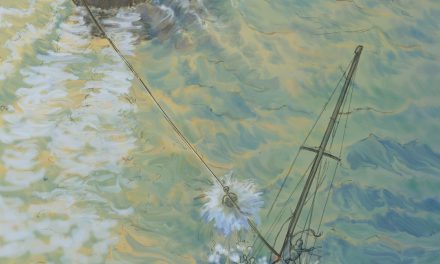
The End of His Rope – Boat Towing Terror
January 1, 2020
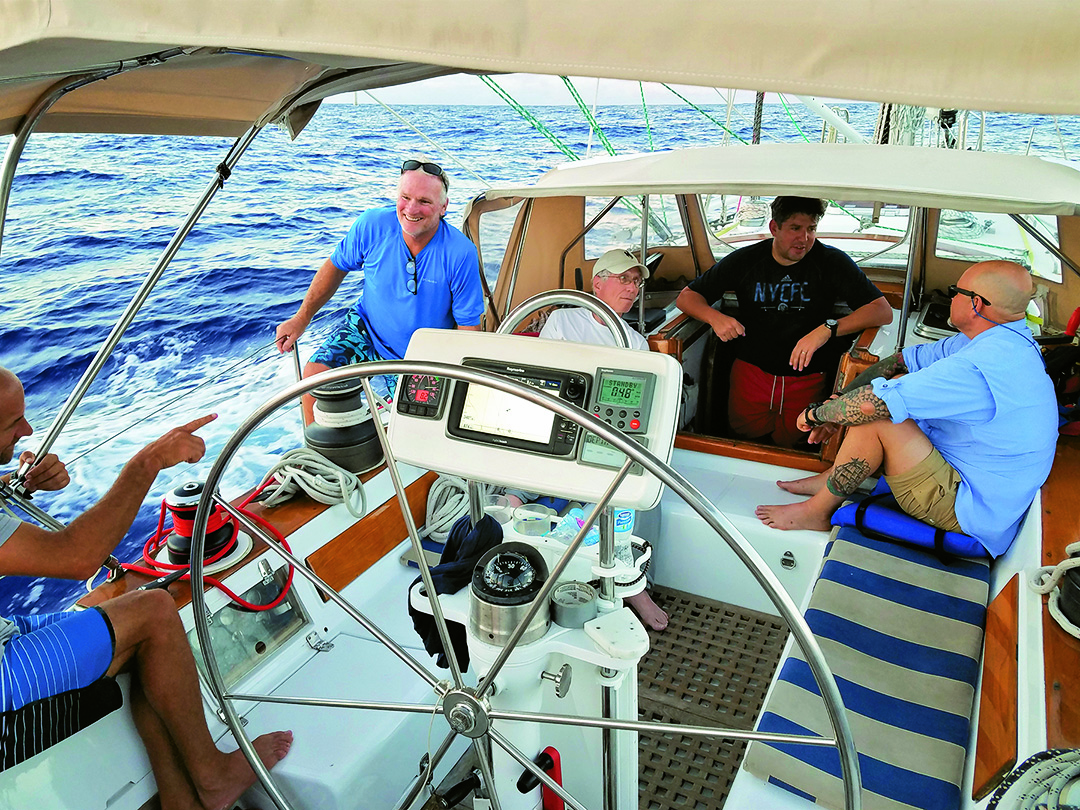
Big Sea, Small World: John Kreschmer Profile

Getting Back to Basics
August 15, 2021
Now on Newsstands
Join Our Mailing List
Get the best sailing news, boat project how-tos and more delivered to your inbox.
You have Successfully Subscribed!
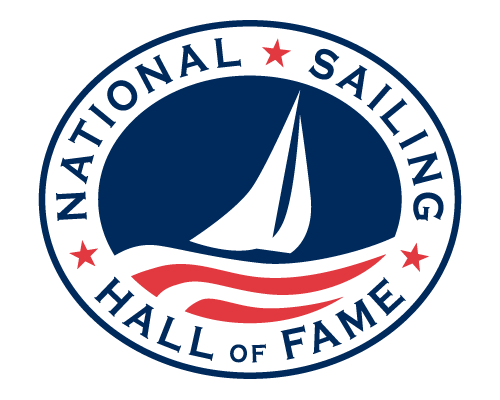
All Inductees > Class of 2023
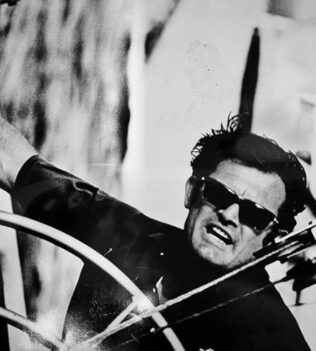
Charles Eugene "Charley" Morgan Jr.
November 17, 1929 - January 6, 2023
Chicago, Illinois
There are many words to describe Charles E. Morgan, Jr. — enthusiastic, inquisitive, industrious, and friendly are a few that come to mind. Charley, as he was known around the waterfronts of the world, enjoyed a long career making sails, flying airplanes, designing and building boats, racing for the America’s Cup, creating artwork, making exhibits for Disney World, and working as an expert on handicap rating rules.
After attending the University of Tampa, he worked at Johnson Sailmakers for a brief time before starting his own loft in 1952 at the age of 23, Morgan Racing Sails. He focused on small one-design yachts like Stars, Thistles, and Snipes. To help sell his sails he competed at a high level. Charley Morgan won the Star Class North American Championship and many other regattas. He was a sought-after crew on larger boats and became fascinated with finding ways to improve boat speed. In 1955 he teamed up with Charlie Hunt to design and build a 32-foot hard-chine yawl. The hull was coated with a new material called fiberglass. The boat won several races, and they built more boats. In 1960, Morgan had a breakthrough when he was commissioned by Jack Powell to build a 40-foot, centerboard yawl named “Paper Tiger.” The boat won the Southern Ocean Racing Conference in 1961 and again in 1962. Capitalizing on the success of his racing boats, Morgan founded the Morgan Yacht Corporation with partner Bruce Bidwell. The company’s order book was filled with racing and cruising yachts ranging from 24 to 54 feet in overall length. Many of the 1,000+ Morgan Out Island series cruising yachts are still on the water today.
Morgan sold his company to Beatrice Foods in 1968 and used the funds to mount an America’s Cup campaign. He designed, built, made the sails, managed, and skippered Heritage in the 1970 America’s Cup Defense Trials. The 12 Meter boat was too large to put on a trailer to transport it over the road to Newport, R.I. so Morgan and his crew sailed the boat from Florida to Rhode Island. The boat was built out of wood and coated in varnish. Heritage was a beautiful yacht but did not make the cut losing to Intrepid. Critics wrote that Charley Morgan had tried to manage too many tasks to be successful. Still, he was a popular character that Cup summer.
Morgan built several watercraft for Disney World including Mark Twain’s river boat and the 20,000 Leagues Under the Sea submarine. In his later years he studied art by traveling to Europe to study master works. He took courses and lessons on how to be a better artist. In 2018 a large sculpture of the frames of a sailboat hull was placed along the Riverwalk in Tampa. The title of the work is “Paying Homage to Charley.”
Gary Jobson
Preserving America’s Sailing Legacy
Engaging Sailing’s Next Generation
Stay Connected to the National Sailing Hall of Fame
- Life & Culture
For sailboat designer Charley Morgan, life's still a breeze
- Times Staff Writer
Charley Morgan, who calls himself "the ancient mariner," felt like a kid again. Eighty-five candles will grace his next birthday cake, but when he noticed the palm trees swaying beyond the window, he marched outside to look at Boca Ciega Bay. Standing on his dock, he saw Blue Cloud prancing at the end of a rope like a rambunctious colt wanting to leap the corral fence.
"Let's go sailing," Morgan said.
He took hold of the tiller. Tim Horsman, his stepson and owner of the 24-footer, unfurled the sails. Catching the wind, Blue Cloud bolted toward open water. Seconds later, she — Morgan observes the traditions — was slicing through waves fast enough to lean over. The old man grinned.
"We're honking along."
He felt like a rambunctious colt himself. A year ago, he felt older than his age. He saw blood in his urine. He needed a nap after breakfast. A high-energy optimist by nature, he wondered if his friends might soon be reading about him — in the obituaries.
"Let's get the jib up," he yelled to his stepson, who raised the forward sail.
In his younger days, Morgan was among the world's premier designers of sailboats, fancy ones for millionaires and modest ones like Blue Cloud. Self-taught, in 1960 he built Paper Tiger for famous New York yachtsman Jack Powell. In 1965 he founded Morgan Yachts, the company that made him famous. He was a renowned sailor as well, competing in the Southern Ocean Racing Circuit and sailing's most celebrated event, the America's Cup. He was so aggressive at the tiller, a competitor once said, that Morgan wouldn't have let his mother win even an insignificant race. Fortunately, Mom didn't sail.
In 1968, Morgan sold his company and became an exceedingly wealthy man. Then he designed a 12-meter wooden boat for himself, Heritage , to race in America's Cup trials in 1970. He didn't advance, though Heritage won other races elsewhere. His masterpiece is still in use in Newport, R.I., to raise money for charity. Sometimes Morgan sits on his couch in Treasure Island with a legal pad and redesigns Heritage for fun. With tweaking, the still-driven Morgan is sure it could be faster.
"Charley isn't the type of person who is going to just sit there and relax," his wife, Maurine, always tells friends. "He always has something going.''
He was born in Chicago in 1929 but grew up in Tampa. He was a boy when his uncle took him sailing on Lake Conway near a sleepy town called Orlando. At 10 he built his first sailboat out of discarded orange crates and sack cloth.
Professionally built sailboats were a rare sight during the World War II era in Tampa Bay. He never saw more than eight at once. Sometimes he got a loaner and sailed to St. Petersburg. At 19 his confident parents let him sail on a boat called the Red Bird — to Havana.
The adventurous boy also was enamored by the romance of deep-sea diving. During the childhood summers he spent with relatives on Florida's Indian River, he built his underwater helmets out of tin buckets. "Kid, you're going to drown," yelled his uncle, hauling him from the water.
Planning your weekend?
Subscribe to our free Top 5 things to do newsletter
You’re all signed up!
Want more of our free, weekly newsletters in your inbox? Let’s get started.
"It was a different world," Morgan says. "So different from today's Florida. The old-timers ate turtles and turtle eggs. My aunt and uncle drank their water from a cistern — except for the time a cat drowned in it."
The future sailboat designer to millionaires made root beer money by catching toadfish on a cane pole and selling them as crab bait for a nickel a pound. His Cracker kin ate so many mullet their stomachs fluctuated with the tide.
At the University of Tampa, Morgan tried focusing on engineering. Then a sailing friend enlisted him in a sailmaking operation. Morgan quit college and opened a sail shop on the St. Petersburg waterfront. Sailmaking led to Morgan Yachts. His best-known sailboats ranged from 24 to 54 feet. He even built the submarines Disney World used in its 20,000 Leagues Under the Sea ride.
As a businessman, his credo was "You don't get your boat until I get my money." Even now he subscribes to the Harvard Business Review.
"Luff up," he yelled to his stepson, who arranged the sails.
Blue Cloud headed into the wind, bucking like a bronco, though not enough to affect Morgan's delicate equilibrium. His thousands of nautical miles over the decades have included many spent retching over the side. How does he manage? Throw up and focus on what's important. On one voyage to Cuba, a sail split in a storm and he came inches from being lost at sea.
In 1956, he met Sally Crawford, who did all their marketing. Their marriage lasted until her death from cancer in 2001. In Europe he spent months grieving and looking at art masterpieces. Perhaps because he is Charley Morgan, he wondered about reinventing himself as an artist. After all, he had enjoying drawing as a kid.
He studied, took lessons from Tarpon Springs maestro Christopher Still, painted like a maniac. In 2006 he married Maurine Horsman, an artist who paints on one side of the Florida room while on the other side he works on a painting inspired by seeing a panther near the St. Johns River when he was a boy.
His bookshelf is lined with art books and volumes about sailing and design. He likes nothing more than discussing the engineering involved in boat building, using the word "theorem" or mentioning "the propagation of gravity waves" or puzzling over the "vorticity in trailing eddies" that slow otherwise fast sailboats.
"Charley Morgan is a vibrant young man who is so tense with ideas, thoughts, philosophies, ambitions and self-improvement projects that on a clear, quiet night you can almost hear him hum as though he were a human generator, which, indeed, he seems to be." The late sailing writer Red Marston published that elegant sentence in the St. Petersburg Times more than a half-century ago.
A little more than a year ago he saw blood in the toilet bowl. Doctors were puzzled about his urine. Bewilderment frustrates Charley Morgan. Tell him what's wrong and how it can be fixed.
At the Moffitt Cancer Center, he got an answer. There was a tumor on a kidney. Doctors removed the kidney. He rested, felt weak, got stronger. Weeks and months passed. He started painting, started looking out the windows at Blue Cloud .
She is not the Heritage , and Boca Ciega Bay is not the North Atlantic. His days of sailing in the America's Cup are long behind him.
It didn't matter.
Out on the bay, the old man grinned and brought her home.
Contact Jeff Klinkenberg at [email protected] or (727) 893-8727. Follow @jeffklinkenberg.
MORE FOR YOU
- Advertisement
ONLY AVAILABLE FOR SUBSCRIBERS
The Tampa Bay Times e-Newspaper is a digital replica of the printed paper seven days a week that is available to read on desktop, mobile, and our app for subscribers only. To enjoy the e-Newspaper every day, please subscribe.

Published on January 9th, 2023 | by Editor
Eight Bells: Charles Morgan
Published on January 9th, 2023 by Editor -->
Charles Morgan, (November 17, 1929-January 6, 2023), an icon in the world of sailing from the late 1940s, passed away at 93 years. His passing came just hours after his beloved wife Maurine had died.
Charley was born in Chicago in 1929 but grew up in Tampa, FL. He was a boy when his uncle took him sailing on Lake Conway near a sleepy town called Orlando. At 10 he built his first sailboat out of discarded orange crates and sack cloth.
He attended the University of Tampa and took a job with Johnson Sails. In 1952 he founded Morgan Racing Sails in Tampa, FL. While making sails, he met yacht designer George Luzier, who got him interested in designing boats. In 1960 Jack Powell commissioned him to build the 40 foot centerboard fiberglass yawl PAPER TIGER.
The famously successful Paper Tiger won the SORC Southern Ocean Racing Conference in 1961 and 1962. Because of that triumph, his prior success building racing sails, and a newly developed relationship with legendary yacht designer Olin Stephens; Morgan Racing Sails received an order to build some sails in 1962 for the Stephens-designed America’s Cup defender Columbia.

Unable to find a builder to manufacture the Tiger Cub, a smaller version of Paper Tiger, he founded the Morgan Yacht Corporation in 1962. Early models included the Tiger Cub and fiberglass sloop Morgan 34. The Morgan Yachts line of boats quickly grew to a fleet of sizes from 22′ to 54′ Morgan Marauder. In 1968, he sold his company, which increased his wealth substantially, but continued to design and help with the company.
Charley’s interest turned to the 1970 America’s Cup where he designed, built, and skippered his 12 Meter Heritage, which was launched May 3, 1970. He even sailed the boat on its own bottom from St. Petersburg, Florida to Newport, Rhode Island.
There were four 12 Meters competing for the America’s Cup defense in 1970: Weatherly (12 Meter US-17), Intrepid (12 Meter US-22), Heritage (12 Meter US-23), and Valiant (12 Meter US-24). Heritage started the trials off well with a win over Weatherly but was later knocked out of the trials by Intrepid.
In response to customer feedback while operating Morgan Yacht, he designed the shallow draft Morgan Out Island 41. One of the most popular boats over 40 feet overall ever built. First built in 1971 the spacious boat became popular with charter companies, becoming “the standard charter boat. Charlie left Morgan Yachts in 1972.
He found Heritage Yacht Corporation in 1975, producing trawlers and sailing yachts. He later worked for Chris-Craft, doing design work on their trawler line. He designed sailboats in the 60s for Columbia Yachts including the Columbia 40 and Columbia 38 as well as other yacht builders and private clients. Later in the 70s till the early 90s, he also designed for other manufacturers including the Com-Pac 35 for Hutchins Yachts.
Sailmaker, racing sailor, yacht designer, boat builder, and America’s Cup designer and competitor; Charley was accomplished in all aspects of sailing and was truly a sailing legend.

Tags: Charles Morgan , Eight Bells
Related Posts
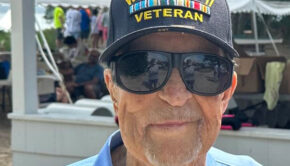
Eight Bells: Dick Heinl →
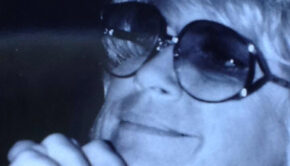
Eight Bells: Diana Mautz →
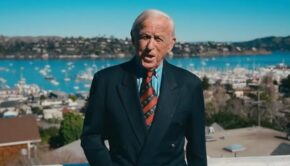
Eight Bells: Knud Wibroe →
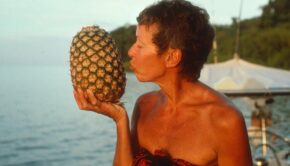
Eight Bells: Patience Wales →
© 2024 Scuttlebutt Sailing News. Inbox Communications, Inc. All Rights Reserved. made by VSSL Agency .
- Privacy Statement
- Advertise With Us
Get Your Sailing News Fix!
Your download by email.
- Your Name...
- Your Email... *
- Email This field is for validation purposes and should be left unchanged.


Professional BoatBuilder Magazine
Charley morgan 1929 -2023.
By Dan Spurr , Apr 10, 2023

Charley Morgan steers his 12 Meter Heritage on Narragansett Bay. He liked to wear vests with big pockets, probably to hold all the big ideas he had.
A bright, kindly bear of a man who seemed like he might live forever finally gave up the good fight on January 6, at age 93, reportedly just hours after the passing of his second wife, Maurine. Timing is everything and Charley, as he was affectionately known by just about everyone, seemingly aced it even at the end.
His timing for entering mass production of fiberglass boats was also excellent. He founded Morgan Yachts in 1962 with a 28′(8.5m) sloop called the Tiger Cub. Aided by Dick Valdez and Vince Lazzara—who at the same time were running Columbia Yachts in California, and who purchased the plans to the Tiger Cub (which became the Columbia 31) and Morgan’s 38 (11.6m) Sabre (which became the Columbia 40)—Morgan kept a watchful eye on their success, particularly on the business end, and more specifically development of a dealer network akin to the auto industry. Key to the growth of both companies, Morgan told me years ago, was that unlike wooden boats, which he termed a “wasting asset,” banks were willing to finance fiberglass boats, which enabled the middle class to become yacht owners. To support his dealer network, Morgan worked with banks to “floor plan” dealer inventories. Emulating another aspect of the automobile industry, Charley’s first wife, Sally, collected car brochures and used them as a guide for their own promotional literature, substituting key words like “yacht” for “automobile” and “icebox” or “locker” for “trunk.”
There are still hundreds if not thousands of Morgan yachts afloat in all corners of the U.S. and around the world, which will make the name familiar to a young generation of sailors. In total, Morgan produced more than 40 models. The look of a 1968 Morgan 41 (12.5m) today, pretty as she is with low sweeping sheer and graceful overhangs, belies the layered story, Charley’s story, that fills in behind her and the thousands of other boats bearing his name.
Charley Morgan’s Impact on the Industry
Though born in Chicago, Illinois, Morgan grew up on the west coast of Florida and attended the University of Tampa, where he majored in economics and pre-engineering. A man who loved words and always seemed to search for a clever and precise way to say something, he liked to quote one of his professors, who told the class, “There is no economic advantage that cannot be duplicated or nullified.” Those became Charley’s watchwords.
He built model airplanes as a kid, and got a pilot’s license, but during World War II something shifted, and in Charley’s words, he “went queer for boats.” He fell in love with sailing and recognized that speed is a combination of hullform, construction, and sails. So, after graduating in 1951 he moved to St. Petersburg and opened Morgan Yacht Sails in an airport hangar. With no time for formal education in naval architecture, he soon taught himself the other ingredients in the recipe for speed—design and boatbuilding skills.
In 1956 he commenced his first build, the 31′ (9.4m) Brisote , constructed of plywood, with a scavenged Star-class keel, a Thistle mainsail, and a modified Penguin mizzen sail. He took third in fleet and second in class in that year’s St. Petersburg-to-Havana race. Encouraged, he designed and built the 40′ Paper Tiger with a steel backbone, fiberglass skin, and wood decks. Pundits at his St. Petersburg Yacht Club mused that it would “rust, shatter, and rot.” What it did do was win the SORC (Southern Ocean Racing Circuit) in 1961 and ’62, a damn impressive start to anyone’s career.
Charley’s successes caught the attention of yachting’s elite, and in 1962 he was invited to crew on the 12-Meter Columbia for the America’s Cup trials in Newport, Rhode Island. “I was in the cockpit with Glit Shields [Cornelius Shields Jr.] steering and Olin Stephens navigating,” he said. “Olin took me under his wing, and we had a lot of good conversations. Olin was so generous…without giving away business.”

The 12-Meter Heritage—designed and built by Morgan, who also skippered her in America’s Cup trials—cruises at sunset on Narragansett Bay.
Eight years later, in 1970, Charley decided to have a go at the Cup with his own boat, embarking on a project never done before or since: designing, financing, building, and skippering a 12-Meter. Oh, and he built the sails, too. Heritage was sailed from Florida to Newport on her own bottom. During trials she had a few noteworthy wins but did not perform well enough to earn the right to defend. Heritage , the last American 12 to be built of wood, still sails Narragansett Bay as one of several Cup veterans operating as day charters.
During the heyday of Morgan Yachts in the 1970s Charley built what was at the time a modern production boat facility, with several model lines moving simultaneously, with chain falls and gantries to move hulls and decks, and scaffolding to elevate crew. Their capabilities landed contracts with Disney World to build all its large fiberglass structures for the new amusement park in Orlando, including a 120′ (37m) submarine ride and jungle cruise boats. At the time, Charley believed the sub was the largest fiberglass structure in the world.
In 1968 Charley thought about going public with a stock offering but instead was enticed by the Beatrice Foods conglomerate to sell, staying on for four years. In 1984 Catalina Yachts bought Morgan Yachts, mainly to obtain an East Coast manufacturing facility, and to get the tooling for the hugely popular center-cockpit Out Island 41, which helped popularize the bareboat charter industry in the Caribbean.
After Morgan Yachts, Charley says he retired but not really, trying his hand at designing trawlers and expert witness work. He and wife Maurine took up painting, and the last time I visited their Treasure Island home Charley was packing one of his works for donation to a local charity. He spent hours with me aiding my research for Heart of Glass , the history of fiberglass boatbuilding, because he loved boats, loved the industry, and felt it was important that the pioneers be remembered and properly acknowledged.
And because it was his nature to always give more than he got.
Read more Design , Obituary , People/Profiles , Rovings articles

- CNC Construction on the Rise
How computer-aided design and software-controlled manufacturing technologies have reshaped custom and semi-production boatbuilding.

- Marine Trade Education News
Ferretti Group Adds Trade Schools The Italian luxury yacht builder, who owns upscale brands such as Riva, Ferretti, Italma, CRN, Wally, and Pershing, announced the opening of marine trade schools… Read more »

Hull Vane: A Wing With Benefits
Typically, military ships are designed and built for specific missions, not to curb their carbon footprint. However, if the Dutch navy serves as an example, that is about to change…. Read more »

Recent Posts
- Learn Electrical Systems from Nigel Calder
- PRO-SET Epoxy Named an Official Supplier for New York Yacht Club American Magic, Challenger for the 37th America’s Cup
- Sea Hawk Paints’ Colorkote is ‘reinventing the art of antifouling’
- Companies (82)
- Construction (105)
- Design (156)
- Drawing Board (8)
- Education (24)
- Environment (15)
- Events (20)
- Materials (48)
- Obituary (17)
- People/Profiles (46)
- Products (16)
- Propulsion Systems (30)
- Racing (15)
- Repair (37)
- Rovings (313)
- Short Cuts (3)
- Sponsored Partner News (13)
- Systems (80)
- Task Sheet (1)
- Uncategorized (26)
- Wood to Glass (7)
ProBoat.com Archives
Olson’s Classic Yachts
Enjoy the freedom of sailing well-equipped cruising yachts, without the cost and maintenance hassle of private ownership., paper tiger – morgan 42.
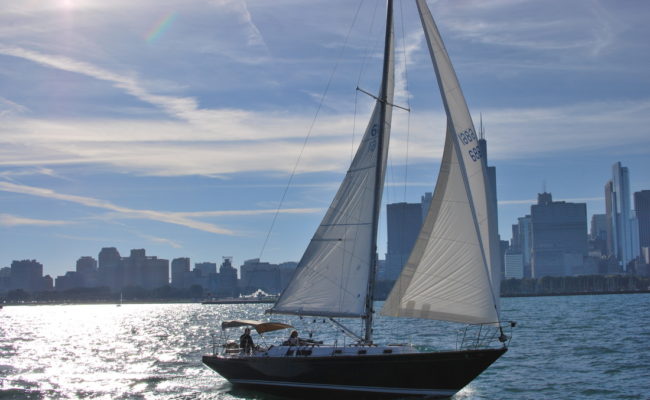
Naval architect, ocean racer and yacht builder Charlie Morgan launched his career with back-to-back wins racing his own design 42-foot yawl in Southern Ocean Racing Circuit competition. Forming Morgan Yachts he used his racing experience to design fast bluewater cruisers for a line which quickly became one of the most popular of the era.
Our Morgan 42 is a production sloop version of his original yawl design. Prior to our acquisition, Paper Tiger was harbored her entire life at West Basin Marina in St. Joseph, Michigan, a popular haven for other classic Morgan sloops. Owned in recent years by a former Morgan Yachts worker, she has cruised Lake Michigan extensively, was raced regularly and successfully in local and southern Lake Michigan yacht club races, and has been a frequent competitor in the annual Chicago-to-Mackinac race.
Renamed in honor of Morgan’s own yacht in her transition to our fleet, Paper Tiger is unmistakably Charlie Morgan - seaworthy and fast with eye-turning lines: low freeboard, bow and stern overhangs and sweeping graceful sheer. Easy to fall in love with, a signature element of her allure, as with other Charlie Morgan originals, is architectural honesty. Her elegant beauty is a direct result of her core sailing function.
Paper Tiger offers space and speed advantages over smaller boats. When you bring guests or plan on spending time aboard, you’ll appreciate her large cockpit and spacious cabin, amply trimmed with genuine teak and brass. Getting away for a weekend cruise, you’ll be happy to have the extra speed. On your mooring or sailing Chicago waters, you’ll be surprised at the attention her emerald green hull attracts. If you have the experience, you can be her skipper!
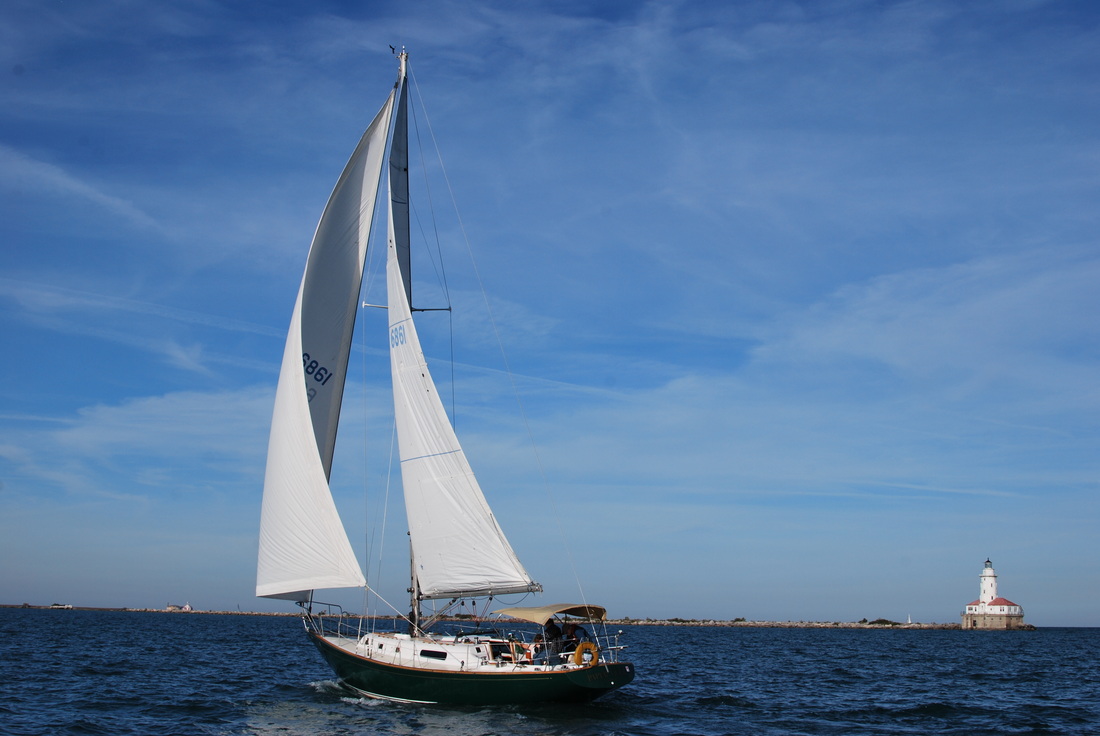
Comments are closed.
Great choice! Your favorites are temporarily saved for this session. Sign in to save them permanently, access them on any device, and receive relevant alerts.
- Sailboat Guide
- Morgan Yachts
Charles Morgan was already well known as a designer of one particularly successful racer, ‘Paper Tiger’, when he started building another of his designs, the TIGER CUB, on his own. But it wasn’t until 1965 when he joined forces with long time friend, Bruce Bidwell, and began to build the successful MORGAN 34. This was followed, most notably, by the MORGAN 24, 30, 41, and 45. The OUT ISLAND 41, introduced in 1970, became legendary as a no-frills, center-cockpit standard, especially in the charter trade. Charles Morgan’s involvement in the company ended in 1972. Since that time, the company was passed from one corporate entity to another, until it came into the hands of Catalina Yachts in 1984. Catalina continued with a few models, including the OUT ISLAND 41, before the Morgan name was retired.
Associations
- One Ton Class
- Moorings Yacht Charter
- IOR 3/4 ton
- Morgan 46 Facebook page
- Charles Morgan
- Craig V. Walters
- Dick Carter
- Edward S. Brewer
- Henry Scheel
- Nelson Marek
55 sailboats built by Morgan Yachts

Morgan Out Island 41

Morgan 24/25

Morgan Out Island 415
Morgan 383/384.

Morgan 461/462

Morgan Out Island 41 Classic

North American 40

Morgan Out Island 33 MS
Heritage 1 ton.

Morgan Out Island 49
Morgan 40 cruising ketch.

Morgan 54 (Marauder)

Morgan Out Island 51

Morgan Out Island 416

Morgan Out Island 28

Morgan 32-2/3

Morgan 45-4
Morgan out island 37/372, morgan 45-2.

Catalina Morgan 44
Morgan 36-5.

Morgan Out Island 36

Morgan Out Island 33
Morgan out island 41 ketch.

Moorings 50
Morgan 42-1.

Morgan 46 (Scheel)
Morgan out island 36 ketch.

Morgan 30-2

Morgan Out Island 30

Morgan 45-3

Catalina Morgan 43

Morgan 36-4/6

Morgan Out Island 415 Ketch

Morgan 42-2


Moorings 60

- About Sailboat Guide
©2024 Sea Time Tech, LLC
This site is protected by reCAPTCHA and the Google Privacy Policy and Terms of Service apply.

- News & Views
- Boats & Gear
- Lunacy Report
- Techniques & Tactics
DEAD GUY: Charley Morgan
Jan. 11/2023: Now comes news over the past weekend that Charley Morgan, one of the great pioneers of fiberglass boatbuilding and design, left this world on Saturday, bound for whatever comes next. He was 93, and reportedly passed just a few hours after his wife Maurine died.
Sailors of a certain age will remember Morgan only for his most successful boat, the once wildly popular Morgan Out Island 41 , one of the very first “charter barges,” or “the fornicatorium,” as he himself once put it. But in fact Morgan first established his reputation on the racing scene. Born in Chicago, he was raised on the west coast of Florida, and the first boat he ever built, Brisote , was a 31-foot plywood yawl with a keel and rudder off a Star, a mainsail off a Thistle, and a mizzen from a Penguin. With his buddy Charlie Hunt, who helped designed and build this unlikely machine, he took second in class in the 1957 St. Petersburg-Havana race.
Inspired by this success, Morgan conceived Paper Tiger , a 40-foot yawl, with a fiberglass hull, on a commission from one Jack Powell. Morgan built the hull and deck, then took these to Clark Mills (designer of the Optimist pram) to have him finish the boat. Mills reportedly remarked: “Well dammit! This is the first time someone’s brought me a coat of paint and asked me to build a boat inside it.”
Paper Tiger went on to take overall honors in the Southern Ocean Racing Circuit (SORC) in both 1961 and ’62.

This, alas, is the only photo I could find of Paper Tiger , pinched from Dan Spurr’s excellent book Heart of Glass (International Marine, 2000) and credited to Morgan himself
The rest, as they say, is history. Morgan founded Morgan Yachts in 1962, when he couldn’t find anyone to build his next design, Tiger Cub , a smaller version of Paper Tiger . He had great success and sold the company in 1968, which gave him the scratch to finance and launch his own one-man America’s Cup campaign. He designed, built, built the sails for, and skippered the 12-meter Heritage , in which he competed in the 1970 America’s Cup defender trials. He was eliminated by Bill Ficker on Intrepid , an episode memorialized in this excellent video. Morgan is the skipper with hair:
Morgan left Morgan Yachts in 1972 and went on to found Heritage Yachts, building both trawlers and sailboats. He also did design work for Chris-Craft, Columbia Yachts, Com-Pac, and Hutchins.
According to Dan Spurr’s book, one of Morgan’s most fun jobs was building fiberglass vessels for Disney World:
“There was a time we built the largest fiberglass boats in the world. Morgan Yachts designed and built the principal original watercraft for Disney World, a whole fleet of them, the largest of which is around 120 feet—submarines, the jungle cruise boats, the steam launches. In all, more than a hundred.”
The total number of sailboats that Charley Morgan designed is quite impressive. Fifty-three in all. Check here for the complete list .

Charley in his dotage, with his back to the camera, at the wheel of Heritage , which still sails today out of Newport. Photo courtesy of 12 Meter Charters
May God go with him.
RIP: Charles Morgan, November 17, 1929 – January 7, 2023
Related Posts

- FAMOUS FEMALES: Remembering Patience Wales; Celebrating Cole Brauer

DEAD GUYS: Bill Pinkney and Jimmy Buffett
Leave a reply cancel reply.
Save my name, email, and website in this browser for the next time I comment.
Please enable the javascript to submit this form

Recent Posts
- SAILING WITH CAPT. CRIPPLE: Winter 2024 W’Indies Cruise (feat. the Amazing Anders Lehmann and His Quadriplegic Transat on Wavester)
- UNHAPPY BOAT KIDS: The Books I Read & A Happy Family Holiday Mini-Cruise
- CANNED FISH: Most Convenient and Healthiest Boat Food Ever
- SOUTHBOUND LUNACY 2023: Phase Two; Newport RI to Antigua
Recent Comments
- Charles Doane on FAMOUS FEMALES: Remembering Patience Wales; Celebrating Cole Brauer
- Ben Ellison on FAMOUS FEMALES: Remembering Patience Wales; Celebrating Cole Brauer
- Jordan on UNHAPPY BOAT KIDS: The Books I Read & A Happy Family Holiday Mini-Cruise
- Mike on UNHAPPY BOAT KIDS: The Books I Read & A Happy Family Holiday Mini-Cruise
- Bob rocco on The Legend of Plumbelly
- January 2024
- December 2023
- November 2023
- October 2023
- September 2023
- August 2023
- February 2023
- January 2023
- December 2022
- November 2022
- September 2022
- August 2022
- February 2022
- January 2022
- December 2021
- November 2021
- October 2021
- September 2021
- February 2021
- January 2021
- December 2020
- November 2020
- October 2020
- September 2020
- August 2020
- February 2020
- January 2020
- December 2019
- November 2019
- October 2019
- September 2019
- August 2019
- January 2019
- December 2018
- November 2018
- October 2018
- September 2018
- August 2018
- February 2018
- January 2018
- December 2017
- November 2017
- October 2017
- September 2017
- August 2017
- February 2017
- January 2017
- December 2016
- November 2016
- October 2016
- September 2016
- August 2016
- February 2016
- January 2016
- December 2015
- November 2015
- October 2015
- September 2015
- August 2015
- February 2015
- January 2015
- December 2014
- November 2014
- October 2014
- September 2014
- August 2014
- February 2014
- January 2014
- December 2013
- November 2013
- October 2013
- September 2013
- August 2013
- February 2013
- January 2013
- December 2012
- November 2012
- October 2012
- September 2012
- August 2012
- February 2012
- January 2012
- December 2011
- November 2011
- October 2011
- September 2011
- August 2011
- February 2011
- January 2011
- December 2010
- November 2010
- October 2010
- September 2010
- August 2010
- February 2010
- January 2010
- December 2009
- October 2009
- Boats & Gear
- News & Views
- Techniques & Tactics
- The Lunacy Report
- Uncategorized
- Unsorted comments
- New Sailboats
- Sailboats 21-30ft
- Sailboats 31-35ft
- Sailboats 36-40ft
- Sailboats Over 40ft
- Sailboats Under 21feet
- used_sailboats
- Apps and Computer Programs
- Communications
- Fishfinders
- Handheld Electronics
- Plotters MFDS Rradar
- Wind, Speed & Depth Instruments
- Anchoring Mooring
- Running Rigging
- Sails Canvas
- Standing Rigging
- Diesel Engines
- Off Grid Energy
- Cleaning Waxing
- DIY Projects
- Repair, Tools & Materials
- Spare Parts
- Tools & Gadgets
- Cabin Comfort
- Ventilation
- Footwear Apparel
- Foul Weather Gear
- Mailport & PS Advisor
- Inside Practical Sailor Blog
- Activate My Web Access
- Reset Password
- Pay My Bill
- Customer Service

- Free Newsletter
- Give a Gift

How to Sell Your Boat

Cal 2-46: A Venerable Lapworth Design Brought Up to Date

Rhumb Lines: Show Highlights from Annapolis

Open Transom Pros and Cons

Leaping Into Lithium

The Importance of Sea State in Weather Planning

Do-it-yourself Electrical System Survey and Inspection

Install a Standalone Sounder Without Drilling

Rethinking MOB Prevention

Top-notch Wind Indicators

The Everlasting Multihull Trampoline

In Search of the Snag-free Clew

What’s Involved in Setting Up a Lithium Battery System?

Reducing Engine Room Noise

Breaking Point: What Can Go Wrong With Your Yanmar?

Mildew-resistant Caulks for Boats

Can We Trust Plastic Boat Parts?

Repairing Molded Plastics

Mailport: Marine plywood, fuel additives, through bolt options, winch handle holders

The Day Sailor’s First-Aid Kit

Choosing and Securing Seat Cushions

Cockpit Drains on Race Boats

Rhumb Lines: Livin’ the Wharf Rat Life

Safer Sailing: Add Leg Loops to Your Harness

Resurrecting Slippery Boat Shoes

Tricks and Tips to Forming Do-it-yourself Rigging Terminals

Marine Toilet Maintenance Tips

Learning to Live with Plastic Boat Bits

The Ultimate Guide to Caring for Clear Plastic
- Sailboat Reviews
Morgan 38/382
Charlie morgan's hurrah becomes ted brewer's success story becomes today's pseudo-classic..
We receive many requests from readers to review certain boats. Almost without exception, the requests come from owners of the boat suggested. Few boats have been the object of more requests than the venerable Morgan 38. At first blush, it is difficult to determine which Morgan 38 we ought to address, as two distinct designs were built since the first one appeared 22 years ago. After some thought, we decided to trace the history of both as best we could, including also the Morgan 382, 383 and 384.
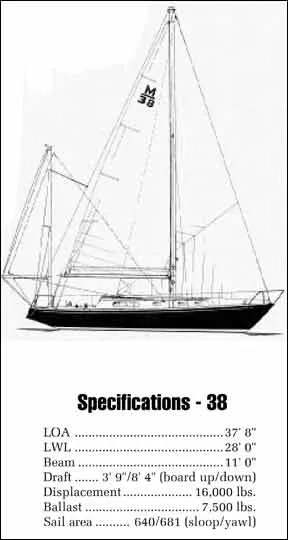
The Morgan 38 was designed in 1969 by Charlie Morgan. He had founded Morgan Yacht Company in St. Petersburg, Florida, in 1965. The Morgan 34 was his first production model. A hometown boy, he had made a name for himself in the 1960 and 1961 Southern Ocean Racing Conference (SORC), winning with a boat of his own design called Paper Tiger . While not a formally trained naval architect, Morgan demonstrated his skill with a variety of designs. Many of these were keel/centerboard models, owing to the shoalness of Florida waters. Seventy-nine were built before production halted in 1971.
In 1977, the Morgan 382 was introduced, designed by Ted Brewer, Jack Corey and the Morgan Design Team. According to Brewer, the boat was loosely based on the Nelson/Marek-designed Morgan 36 IOR One Ton. The most obvious difference between the 38 and 382 was the elimination of the centerboard and the addition of a cruising fin keel (NACA 64 012 foil) with skeg-mounted rudder. They are two completely different designs from two different eras in yacht design.
In 1980, the 382 was given a taller rig and called the 383. About 1983 the boat underwent other subtle changes, now called the Morgan 384. The rudder was enlarged and the interior modified. In its three versions, the Brewer model registered about 500 sales.
The company changed ownership several times during this period. It went public in 1968, was later bought by Beatrice Foods and then Thor Industries. Presently it is owned by Catalina Yachts, who built just 24 38s (three were kits) before discontinuing production in 1986.
The first Morgan 38 was a development of the highly successful 34, which Morgan called a “beamy, keelcenterboard, CCA (Cruising Club of America)-style of yacht. We had a good thing going and didn’t want to deviate; we found little interest in those days in keel boats. Centerboards have their own sorts of problems, but there’s an awful lot of thin water in the world, and safe refuge and quiet anchorages are mostly in shoal water.”
The boat has a long, shoal keel drawing just 3′ 9″ with the board up. The rudder is attached and there is an aperture for the propeller. “Beamy,” in 1969, meant 11 feet. The waterline was fairly short at 28 feet, but the overhangs give the hull a very balanced and pleasing profile. The stern is pure Charlie Morgan—a finely proportioned shape that is neither too big nor too small. In profile, the angle between the stern (which interestingly is a continuation of the line of the backstay) and the counter is nearly 90 degrees. It’s a trademark look.
Sloop and yawl rigs were offered, which was typical of CCA designs. The rig has a lower aspect ratio (the proportion of the hoist to the foot of the mainsail) than later designs, including the Brewer-designed 382. Yet this is a very wholesome rig for cruising. Owners responding to our questionnaire said the boat balances very well.
Owners of the 382 and subsequent permutations seemed less pleased. They didn’t rate balance as highly, noting most frequently the difficulty in tracking (keeping the boat on a straight course) when sailing off the wind (not uncommon with beamy fin keel designs; it’s a trade-off with speed, pointing ability and maneuverability). Others said that they raked their masts forward to improve balance. One thought the problem was caused because the rudder was slightly undersized. Still, these owners liked the way their boats sail.
The rig, of course, isn’t the only difference between the Morgan and Brewer designs. The latter has a foot wider beam—12 feet—and a longer waterline. Two keels were offered, the standard five-foot draft and an optional deep keel of six feet. Displacement jumped a thousand pounds to 17,000 despite a reduction in ballast from 7,500 pounds to 6,600 pounds. Centerboard boats, naturally, require more ballast because it isn’t placed as low as it is in a deep fin keel boat.
The look of the 382 is much more contemporary. The rake of the bow is straighter, as is the counter, which is shorter than the original 38 as well. Freeboard is higher and the windows in the main cabin are squared off for a crisper appearance.
Construction
The hulls of the early 38s were built of solid fiberglass and the decks of sandwich construction. Some 382 hulls were cored, others not. A variety of core materials were used, mostly Airex foam. The lamination schedule was your basic mat and woven roving, with Coremat added as a veil cloth to prevent printthrough.
Both designs have internal lead ballast, sealed on top with fiberglass.
The early 382s did not have the aft bulkhead in the head fiberglassed to the hull, which resulted in the mast pushing the keel down. All boats “work” under load, and bulkheads bonded to the hull are essential to a stiff structure. Anyone who has a boat in which major load-bearing bulkheads are not attached to the hull should do so before going offshore. To its credit, the company launched a major recall program.
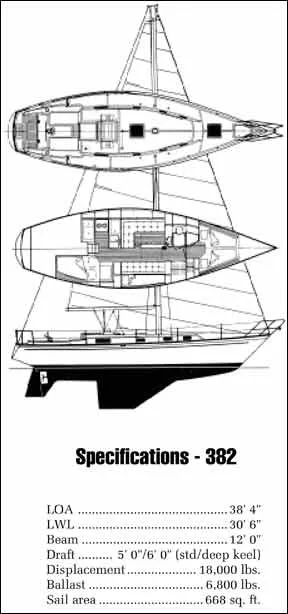
The owners of all Morgan 38s, as a group, note the strength of the boat. One said he hit a rock at 6 ½ knots and suffered only minor damage. Very few problems were mentioned. The owner of a 1981 model, however, said he “drilled through hull at waterline and was surprised at thinness of glass on either side of the Airex: 1/8” inside, 1/16″ outside.” With the stiffness that sandwich construction provides, not as much glass is required; still, protection from collision and abrasion would recommend greater thickness outside. Brewer, incidentally, discounted the report.
Interestingly, Hetron-brand fire-retardant resin was used for a time, prior to 1984; if you recall, this was blamed for the many cases of reported blistering on the early Valiant 40s. About half of the 382 owners responding to our surveys reported some blistering, none serious.
The attached rudder of the early 38 is stronger than the skeg-mounted rudder of later models. But we do prefer the skeg configuration to a spade rudder, at least for cruising. A problem with skegs, however, is the difficulty in attaching them strongly to the hull. One owner said his was damaged in a collision with a humpback whale, but that is hardly normal usage!
Several owners of later models commented that the mast was a “utility pole,” recommending a custom tapered spar for those inclined to bear the expense.
Other problems reported in our survey were only minor and were corrected by the company. In fact, owners were nearly unanimous in their praise for Morgan Yachts’ customer service.
The layout of the Morgan 38 is quite conventional and workable. In both incarnations there are Vberths forward, private head with shower (separate enclosure in the 382), dinette in main cabin with settee, galley aft in the port quarter area and nav station with quarter berth opposite to starboard. Specifications for the first 38s included “attractive wood-grained mica bulkhead paneling, with oiled American walnut trim.” This was a popular treatment in the 1960s, and practical, but often done to excess. By the 1980s, fake teak didn’t play so well. Owners wanted real wood, and that’s what they got in the 382.
Owners of early 38s complained of poor ventilation (“I added six opening ports, and would like an additional center cabin hatch,” wrote one), short Vberths (“Could be 4″ longer, but I’m 6′ 2.””), and more closet space (from a live-aboard).
Owners of later models mentioned the need for a larger forward hatch to get sails through, a hatch over the galley, larger cockpit scuppers, and Dorade vents.
(Teak Dorade boxes were added on the 384.) They complained of not enough footroom in the V-berths and poor location of the main traveler in the cockpit. (The traveler was moved to the cabinhouse top on the 384.)
Despite these minuses, most owners cite the volume of the interior and many stowage compartments as major reasons for their satisfaction with the boat.
Performance Under Sail
As implied in our comments on balance in the “Design” section of this review, the centerboard 38 sailed beautifully. She is dry and seakindly, stable and relatively fast for her generation. Its PHRF rating ranges from 145 to about 150. The yawl rig is probably not as fast as the sloop, but for the cruising couple, the mizzen sail gives the skipper another means of balancing the boat, as well as a means to fly more sail when reaching if he’s prepared to fuss with a staysail.
The 382 rates between 128 and 150, about 137 on average. The Morgan 383 and 384, which are grouped together, rate a mite lower at 135, on average.
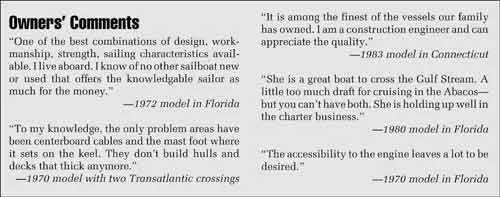
It is not surprising that Brewer’s redesign is faster, even though it’s 1,000-2,000 pounds heavier. This is due to it’s deeper fin and higher aspect rig with the ability to carry larger headsails. There is also less wetted surface. Performance Under Power
The centerboard 38 was powered by the seemingly ageless Atomic Four gasoline engine, though a Perkins 4-107 or Westerbeke 4-107 was available at extra cost ($1,940 in 1969). The early 38s cruise at about 6 ½ knots.
A first-generation Yanmar—the 3QM30—was used on some 382s, and as owners of those engines know, they tend to be noisy and vibrate a great deal. Yanmar engines improved a great deal after the manufacturer redesigned and retooled the entire line. But the most common powerplant was the magnificent 50-horsepower Perkins 4-108. If we were looking for a Morgan 38 to purchase, we’d certainly lean toward one with this engine.
Both designs handle reasonably well under power, as well as most sailboats do, meaning that backing down with a two-blade prop is a necessarily cautious procedure.
A number of owners recommend changing to a three-blade prop, but that will affect sailing performance. One should examine his sailing style closely before making the move.
The Morgan 38, in any incarnation, is a handsome boat that sails well and is built strong enough for most people’s purposes. Some may pause before taking a centerboard boat far offshore, but it has certainly been done—recall, if you will, Carleton Mitchell’s hugely successful racer Finnisterre .
Both centerboard and fin keel versions seem to us to have advantages and disadvantages that are essentially tradeoffs.
On the one hand, we like an attached rudder for cruising, as it provides the best protection from collision with logs and other hard objects. On the other, we recognize the importance of placing ballast low, as in the fin keel version, and we appreciate
Brewer for giving a nice slope to its leading edge so that damage from hitting logs will be minimized. Brewer said that a 382 that passes survey is capable of cruising just about anywhere. “They’ve crossed oceans,” he said.
To our eye, we admit to being fond of the CCA designs with low freeboard and graceful sheer lines. The yawl is a versatile rig that is especially attractive, though it does require more in the way of tuning and maintenance.
An early Morgan 38, in good condition, should sell in the high 20s. Expect to pay a thousand or so more for the yawl. For sellers, considering that in 1969 the base price of the boat was $22,995, that’s not a bad return on investment.
Fifteen years later the price had jumped to $84,995 (1984 model). Those boats today are advertised in the mid to high 60s, and occasionally the low 70s. (What anyone is actually getting for these days is another matter entirely).
Considering the changes in the economy, that’s still not bad performance. What it means most to the prospective buyer is that the Morgan 38 and 382 are popular, much admired boats that should, we expect, hold their value as well as or better than most others.
RELATED ARTICLES MORE FROM AUTHOR
My husband & I bought a 382 Morgan in 1980. Named her Galewynd. We enjoyed her til we sold in 2000
My husband & I bought a 382 in 1980. We named her Galewynd. We enjoyed her til we sold in 2000
LEAVE A REPLY Cancel reply
Log in to leave a comment
Latest Videos

Island Packet 370: What You Should Know | Boat Review

How To Make Starlink Better On Your Boat | Interview

Catalina 380: What You Should Know | Boat Review
- Privacy Policy
- Do Not Sell My Personal Information
- Online Account Activation
- Privacy Manager
Built From the Ground Up: How Six Boats Changed the Sailing Industry Forever
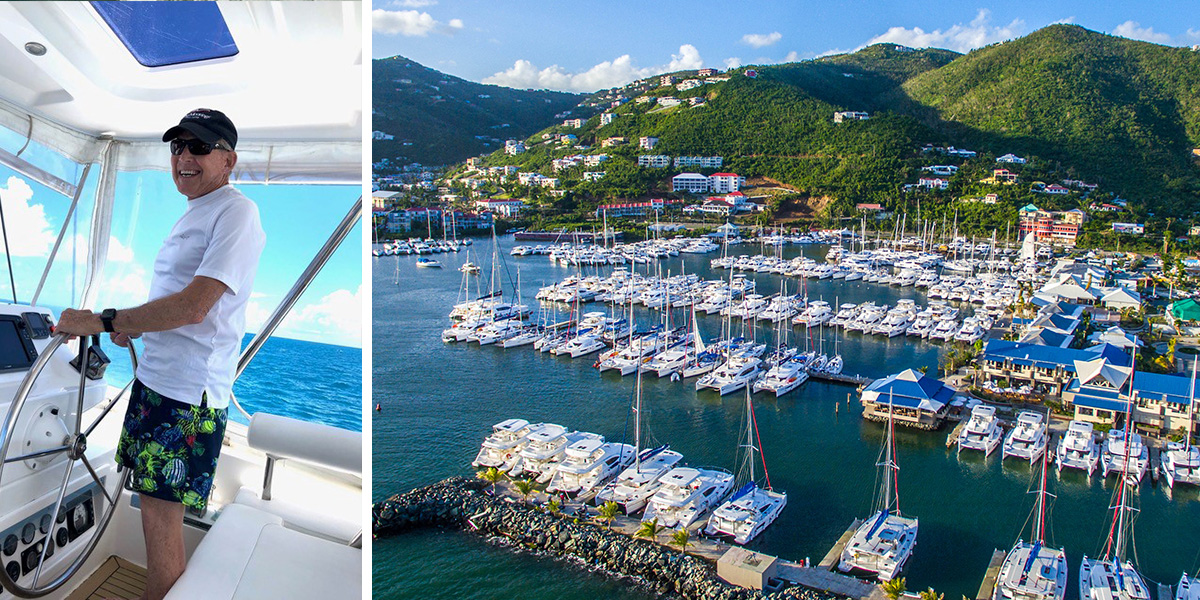
Tony Rainold and his wife, Sherryl, along with Charlie and Ginnie Cary, the founders of The Moorings, met as you would expect -- through sailing. And the idea to open a charter company in the Caribbean came as all great ideas do, under the influence of rum.
The Moorings has come a long way when you think about it. Starting out with Tony and his wife booking charters and marketing the product in their New Orleans home and starting with just Charlie and Ginny Cary working at the base in Tortola. The Moorings now employs somewhere around 800 people worldwide, is located in 20 destinations worldwide and has a fleet of 400 yachts. But it all started with six Pearson 35's half a century ago. Tony remembers, "We had about $120,000 between myself, Charlie and our third partner. We went up to the New York Boat Show in January of 69', and we had already been talking to a few manufacturers and looking at different designs. We became enamored with Pearson Yachts. They had a 35 ft. centerboard sloop called a Pearson 35, and we ended up ordering six of those at the show."
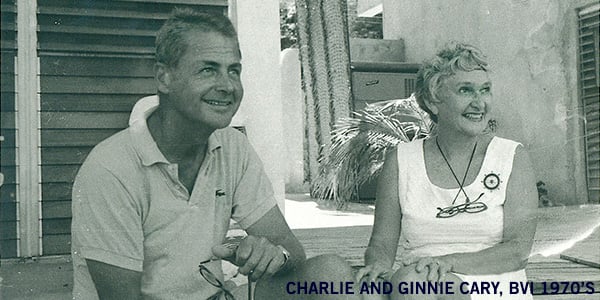
Choosing the first destination
Deciding on the destination of choice took a lot of time, a lot of planning, and a few strokes of luck. After five or so months of searching the Caribbean to find the right location, they had honed in on the Virgin Islands, for obvious reasons. Charlie and Tony caught wind that in August of 1969 an air service would be instituted in Tortola, BVI. And with the news, they knew what their next move would be. "Having learned that, we chartered a motor boat and went over to Tortola to start talking to people. We met a guy from Houston who had just bought a couple of waterfront apartments in Road Harbour and we ended up buying two apartments and the rights to use the small dock he had out in front. So that’s where we decided to have our base," Tony explains. And so there you have it, the first charter base to ever exist in the BVI.
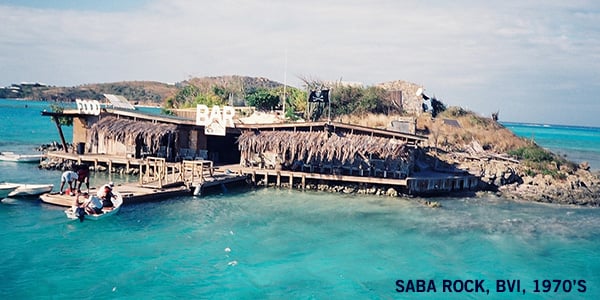
Pieces fall into place
While Charlie and Ginny were busy getting the base ready for opening, Tony and Sherryl were in New Orleans getting the word out. "We started making a brochure and getting ads into sailing and yachting magazines. And we just started booking charters over the phone. It was amazing the interest that was there.I was actually working for a mining company for the first three years and Sheryll was at home answering the phone and working on the brochures," Tony recalls.
In the summer of 1969 those six Pearson Yachts were delivered by freighter to San Juan, PR, and then delivered to Tortola by Tony and his wife, in addition to Charlie and Ginny. Tony shares, "We got the first two boats off the freighter, stepped the masts and rigged them at the San Juan Yacht Club and then sailed them over to Tortola. And that’s how we really started."
Building the business
Charlie and Tony realized pretty early in that they were going to need more than six boats if they wanted to take business to the next level. Once they got through the first year, they started talking with builders about designing a yacht that would be good for charter. The pair headed down to Florida to collaborate with Charlie Morgan of Morgan Yachts. They decided on a design that was much more beamy than that of your typical monohull at the time. And of course, for the charter fleet, the yachts were an instant sensation. "The boat was a Morgan Out Island 41. And in 1971, we headed back up to the New York Boat Show, but this time it was to sell the boats. We got a deposit on all ten available boats. It was amazing," Tony explains. Three years in, as the business continued to grow, Tony decided time to leave his job with the mining company, rent an office and hire some help. But that doesn't mean that things slowed down for Tony. He remembers the hard work put in, "I was constantly creating brochures with Sherryl and I would travel down to the BVI frequently to learn the area. We’d take pictures and write up the brochures. And when the boats were getting delivered to Clearwater, FL I'd have to go over to Clearwater to the boat factory to see the boats, check up on the production and make sure everything was going right. But then when the boats came out of production I would go receive the boats from Morgan Yachts and then I would commission the boats. We had a big trailer and a couple of suppliers and we would buy everything we needed and store them in the trailer. I would do all the varnish work, rig the boats and hire a delivery crew to sail them down to the BVI. I was wearing so many hats at that time."
It was not long after that initial order of 10 Out Islands, that Tony and Charlie decided to order 20 more. Tony was in charge of selling those yacht and it was never a difficult task. Tony recalls that it's the idea of owning a yacht in the Caribbean that had people excited and ready to invest.
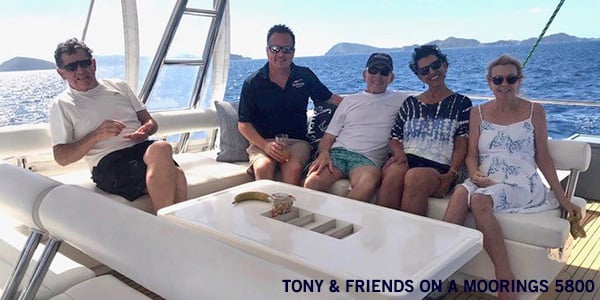
Obvious reasons for success
It is not by coincidence that The Moorings has seen success for 50 years. "I imagine that The Moorings is as successful as it is today because they follow what Charlie and I did from the beginning, which is to have high quality boats and provide a high quality service. There is a lot of expense that goes into making those things happen. I think that’s always been the key. When a charterer comes down and something is not working we would make it right immediately. We had chase boats that you could call up if the water pump isn’t working or if the engine won’t start. We’d just zip out there and get them going again. I think it was that attitude. I can’t emphasize how hard we worked, and I think that work ethic has gone forward with the company."
But all of the hard work was worth it, as Tony remembers, it provided him the opportunity to go sailing, and to bring that dream to other people too. "When my son, who is 51 now, and his sister were babies, we had a bassinet with telescoping legs that we would adjust to the heel of the boat. And they grew up sailing with me. The best part about starting this business was the opportunity to travel and sail in so many beautiful places. I was working tooth and nail, and it was difficult, but at the same time we loved what we were doing because we loved to sail and we loved the beautiful BVI. I loved to be able to share the opportunity to sail in a beautiful destination with other people."
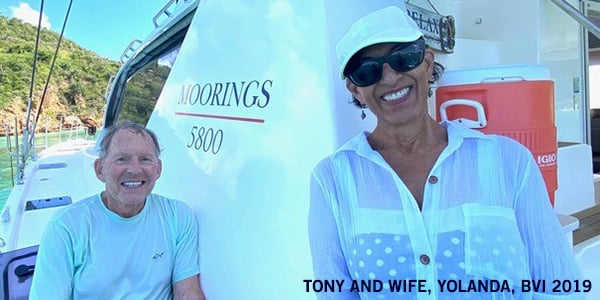
How time changes things
In the early 70's, if you wanted to book a week long charter it would have set you back somewhere around $400. To charter a yacht of similar size (38 ft. - 41 ft.) today, you'd have to multiply that number by 15. "I can’t wrap my head around how much the business has grown. I always thought of it as a mom and pop operation. It became a real entity in 1985. I kept my ownership in the company, which was right about the time I stopped actively working in the business. The company that purchased us was associated with Group Beneteau. At that point we were buying a lot of boats from Beneteau because at that time the dollar was very strong against the French franc, and Beneteau built a really good boat." So good, in fact, that Tony bought one for himself, which he enjoyed racing (and winning those races) for many years.
"When I left the company in the 1980’s we had 20 people working in the New Orleans office. We had help with sales, marketing and bookings. I had also started a travel agency, Mariner International, because we realized we had a captive business. Everyone was going down to the same location so that was a lucrative business for us. We had airline booking agents in addition to the charter agents. I think when I got out in 1985 we had close to 200 boats, we had opened up a base in St. Lucia in Marigot Bay. We had bought a company in the South Pacific with bases in Tahiti and Tonga."
Tony and Charlie left quite a legacy. Starting out, they couldn't have imagined that two salty sailors would be the pioneers of a multi-million dollar industry that spread across the entire globe. Today we thank them for bringing us the opportunity to sail in the world's most stunning destinations, from the comfort and excitement of a private boat.

Katie Campbell
I can do all things through Christ who strengthens me. Philippians 4:13

Custom Classics
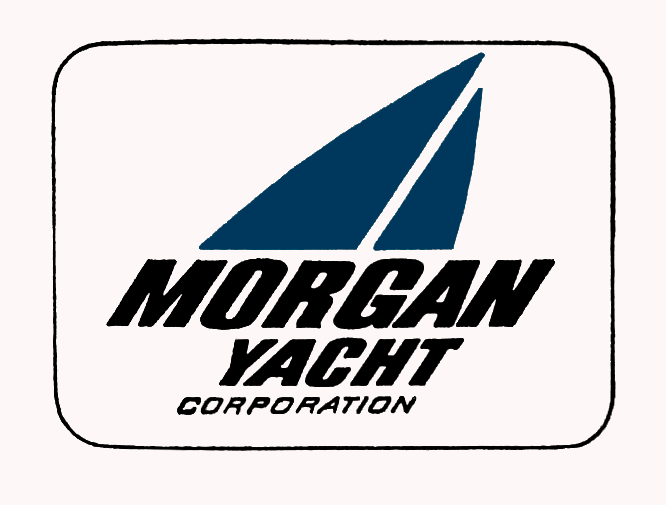
Production Models
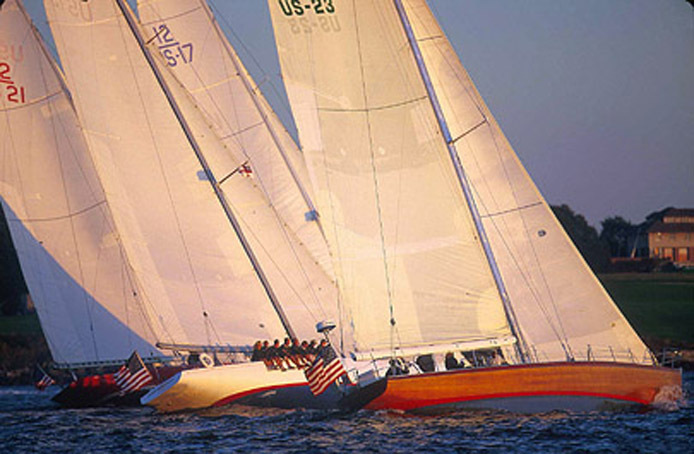
Welcome To Morgan Yacht Connection...
Celebrate Charley Morgan’s contributions to all of the many walks of life. Sailing ~ Art ~ Community Leadership ~ Friendship ~ Philanthropy Location: St. Petersburg Yacht Club Date: February 28th, 2023 Time: 5:00 - 7:00 pm Light Snacks ~ Cash Bar RSVP at: www.spyc.org Call 727-892-6882 or click the link below: Click Here Please let us know you are attending by clicking, “GOING,” on this event. We encourage posting in the discussion page of this event... Pictures, stories, art and thoughts.
The Charley Morgan Legacy

Spotlight News & Community Outreach

Junior Sailing

Want to learn
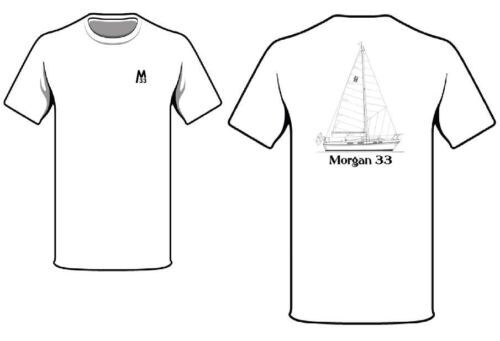
Morgan's Merch
Coming soon, sail it like you own it, adventure awaits.
Get more info now to learn about joining Morgan Yacht Connection in your local area. You are on the right track to an Easy, Affordable and Smart way of getting on the water!
Subscribe to our newsletter
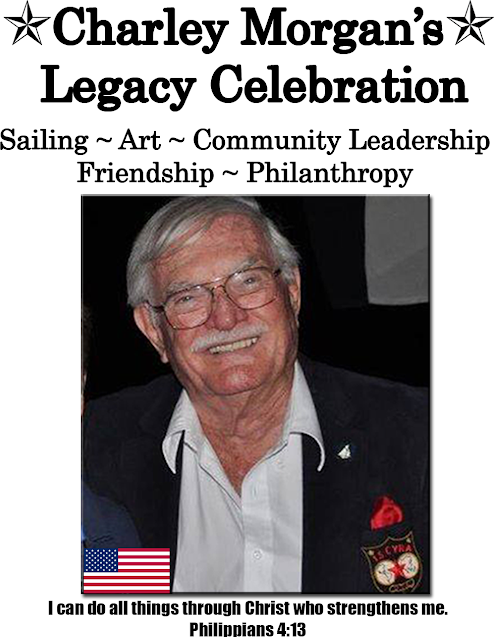
- BOAT OF THE YEAR
- Newsletters
- Sailboat Reviews
- Boating Safety
- Sailing Totem
- Charter Resources
- Destinations
- Galley Recipes
- Living Aboard
- Sails and Rigging
- Maintenance
- Best Marine Electronics & Technology

National Sailing Hall of Fame Announces 2023 Inductees
- By The Sailing Hall of Fame and CW Editors
- July 14, 2023
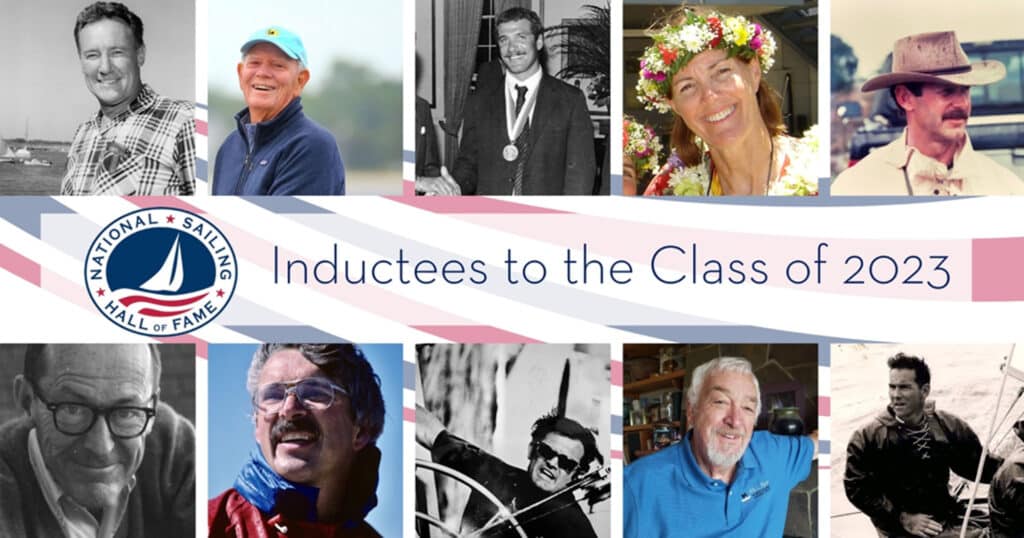
Newport, R.I. – The National Sailing Hall of Fame announced Thursday 10 sailors comprising its 13th class of inductees. The Class of 2023 includes:
- Elwood Widmer “Skip” Etchells – Known as a superb athlete, Etchells’ long career has left an enduring legacy. After building destroyers and icebreakers for the U.S. Navy in World War II, he founded his own boatbuilding company, the Old Greenwich Boat Company, and became a noted builder of hundreds of extremely competitive boats. His philosophy was to deliver high-quality workmanship, with his company’s tagline “Built Like a Yacht.”
- Peter Holmberg – One of the most famous sailors in the Caribbean, Holmberg is known for his skills at all levels of racing, from the Finn Class to Maxis to J Class yachts. He won a Silver Medal in the International Finn Class in the 1988 Olympic Games, the first medal for the U.S. Virgin Islands by an athlete in any sport. Since then, he has been crew on three America’s Cup teams, four Heineken Regattas, eight International Rolex Regattas, eight BVI Spring Regattas and overall winner in three Antigua Race Weeks.
- Sally Honey – A champion sailor, Honey has spent her career contributing to the sport in every capacity from sailmaking to educating on safety at sea. She was twice named Rolex’s Yachtswoman of the Year in 1973 and 1974. One of her groundbreaking achievements was leading an all-women’s crew in the Transpacific Race in 2005. Her most recent inspiring victory was winning the 2022 Newport to Bermuda Race with her husband Stan Honey (HOF Class of 2012) aboard their 56-year old Cal 40.
- John Kolius – A natural, gifted sailor from a young age, he has been a professional sailmaker, sailor and coach. He and his team won a silver medal for the USA in the 1976 Summer Olympics. He continued racing at a high level, winning the J24 World Championships in 1979 and 1981. In 1983, he was named skipper of the two-time America’s Cup defender Courageous and in 1987 America II . Kolius worked with Paul Cayard on the Il Moro di Venezia challenge in 1992 and was a coach for the all-women’s team on Mighty Mary in 1995. He tried to win the Cup one more time as head of Aloha Racing in 2000. In 2002, he returned to racing a Sunfish and finished second in the World Championship at the age of 51.
- William “Bill” Lapworth – Lapworth was one of the first naval architects to successfully embrace the boat building industry’s change from wood to fiberglass. His long career in marine engineering and naval architecture resulted in a line of keelboat one designs built for downwind speed. Teaming up with Jack Jensen, Jensen Marine started building the veritable Cal 20s in 1961. Cal Yachts are still a popular design to this day. A Cal 40 won the Southern Ocean Racing Circuit in February 1964; a fleet of Cal 40s raced the Congressional Cup for many years off Long Beach, California; a Cal 40 won the 2006 Newport to Bermuda Race and in 2022 the Honeys won the Newport to Bermuda Race in their Cal 40.
- John Knox Marshall – A lifelong racer, Marshall earned a bronze medal in the 1972 Olympic Games. He was the mainsail trimmer aboard Intrepid for the America’s Cup Defender Trials in 1974, Enterprise in 1977, Freedom in 1980 and was part of the crew aboard Liberty in 1983 that lost to Australia II . The loss inspired Dennis Conner, Malin Burnham and Marshall to mount a challenge to bring the Cup to San Diego in 1988 and Marshall was the design coordinator for Stars & Stripes . He served as president of North Sails for many years, and upon his retirement there, became president of Hinckley Yachts.
- Charles “Charley” Morgan – Enthusiastic, inquisitive and industrious, Morgan spent his long career making sails, flying airplanes, designing and building boats with his Morgan Yacht Corporation. Many of the over 1,000 Morgan Out Island series cruising yachts are still on the water today. He designed, built, made the sails for, managed and skippered Heritage for the 1970 America’s Cup Defense Trials, losing to Intrepid . In addition, Morgan built several of the water-based exhibits for Disney World.
- Robert “Bob” Perry – As someone who notes that his hobby became his occupation, Perry has focused for decades on designing comfortable, attractive and easy-to-sail yachts. Perry has designed yachts for Tayana, Cheoy Lee, Valiant, Baba, Ta Shing, Hans Christian Yachts, Islander, Passport, Pacific Seacraft and Saga. His expertise is apparent by his courses in yacht design at Evergreen State College in Washington and his boat reviews published in sailing magazines for more than 40-years.
- Richard “Dick” Stearns, III – A highly skilled racing sailor and innovator, Stearns was part of the team that won the International Star Class World Championship in 1962 and in 1964 earned a Silver Medal at the Tokyo Olympic Games. In 1963, Stearns and crew won a Gold Medal in the Pan American Games. Adding to his accomplishments, Stearns won two Tartan 10 North American Championships and competed in 53 Chicago to Mackinac Island Races, winning in 2000 aboard his 35-year-old Cal 40. He served on the U.S. Olympic Yachting Committee in 1968,1972 and 1976 and coached for American teams those years. As an innovator, he pioneered the use of “crosscut” sails using Dacron and Orlon fabrics after purchasing Murphy & Nye Sailmakers and with two of his past crew, Gary Comer and Buck Halperin, founded the Lands’ End company, originally to sell equipment for sailboats.
- The 2023 Lifetime Achievement Award recipient is Tim Hogan , who has been the president of the Interscholastic Sailing Association since 2005 and has championed their causes for almost two decades. He and his team virtually doubled the roster of high school teams over the past 20 years, allowing more young sailors to take their skills into their adult lives. A three-time All American Sailor and successful offshore yacht-racer, he says that his greatest accomplishment is instilling a love for sailing in his four children.
“We’re immensely proud of our inductees this year, as they represent everything we love most about the sport,” said Gary Jobson, co-president of the National Sailing Hall of Fame and Cruising World editor-at-large. “Their contributions to the world of sailing have deeply impacted and touched all of our lives, and each of them have created a hefty legacy for the rest of us to live up to. We are delighted to honor their accomplishments and welcome them into the Hall of Fame.”
The members of the Class of 2023 join 114 current National Sailing Hall of Famers, all of whom are featured in the Legends of Sailing exhibition at The Sailing Museum, which opened last year in Newport, Rhode Island. The interactive experience shares their photos, career highlights and quotes from the legends themselves. This year marks the 13th year of annual induction to the National Sailing Hall of Fame. For more on the inductees, please visit: nshof.org/hall-of-fame . The Class of 2023 will be formally celebrated November 3-4 in Newport Beach, California. The Induction Weekend has become notable as a reunion of sailing’s Who’s Who as previous inductees join the celebrations to welcome their peers into the Hall of Fame. The inductees were nominated by sailors from across the United States. Nominations were reviewed by a selection committee comprised of representatives from the NSHOF Board, previous inductees, the sailing media, the sailing industry, community sailing, maritime museums, the cruising community and US Sailing. Nominations are accepted year-round at nshof.org/nominations . The deadline for Class of 2024 nominees is January 31.
Nominees must be American citizens, 55 years of age or older, who have made a sustained and significant impact on the growth and development of the sport in the United States at a national or international level in the following categories: Sailing – Recognizing achievements made on the water as a sailboat racer, cruiser or offshore sailor.Technical – Recognizing those who have significantly contributed to the technical aspects of sailing. Examples include designers, boat builders and sailmakers.Contributor – Recognizing those who have made other significant contributions to the American sailing experience. Examples include teachers, coaches, administrators, media, artists, musicians, promoters and organizers. Nominees for the Lifetime Achievement Award must be American citizens, 55 years of age or older, who have achieved success in sailing and outside of sailing and have given back to the sport in some significant manner. Lifetime Achievement Award recipients are selected by the NSHOF Board of Directors.
2023 National Sailing Hall of Fame Inductees (alphabetical, with city of birth):
Elwood “Skip” Etchells* – Philadelphia, PA Tim Hogan – Los Angeles, CA (Lifetime Achievement) Peter Holmberg – St. Thomas, USVI Sally Honey – Urbana, IL John Kolius – Houston, TX William “Bill” Lapworth* – Detroit, MI John Knox Marshall – Santiago, Chile Charles “Charley” Morgan* – Chicago, IL Robert “Bob” Perry – Toledo, OH Richard “Dick” Stearns, III* – Evanston, IL *Posthumous
- More: National Sailing Hall of Fame , people , Sailboats
- More People

Miracle in a Bowl
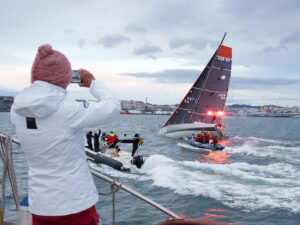
Cole Brauer Completes the Global Solo Challenge
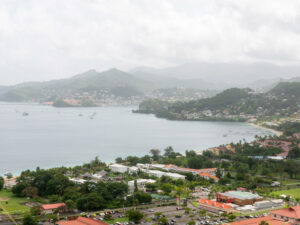
Grenadines Boat Hijacking Suspects Charged with Murder
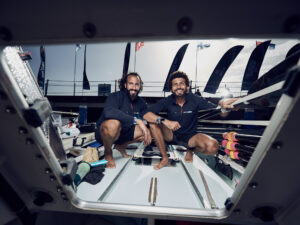
13 Hours in a Life Raft
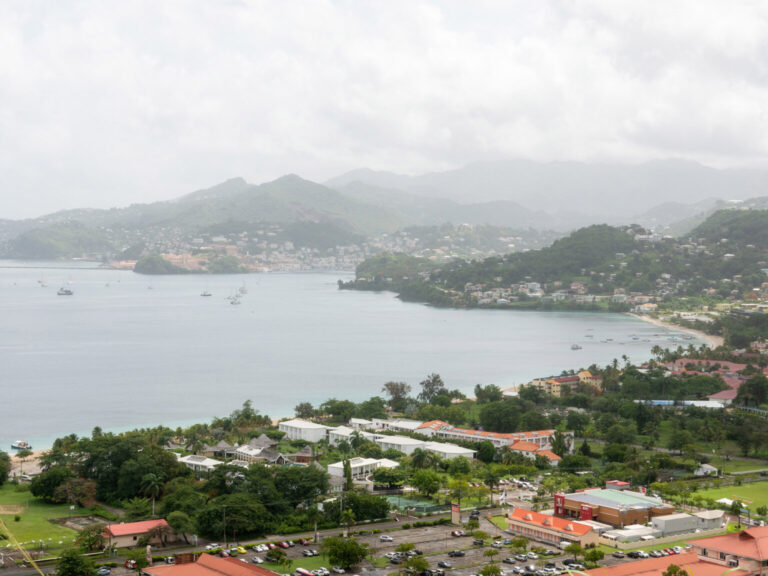
Meet the Bali 5.8
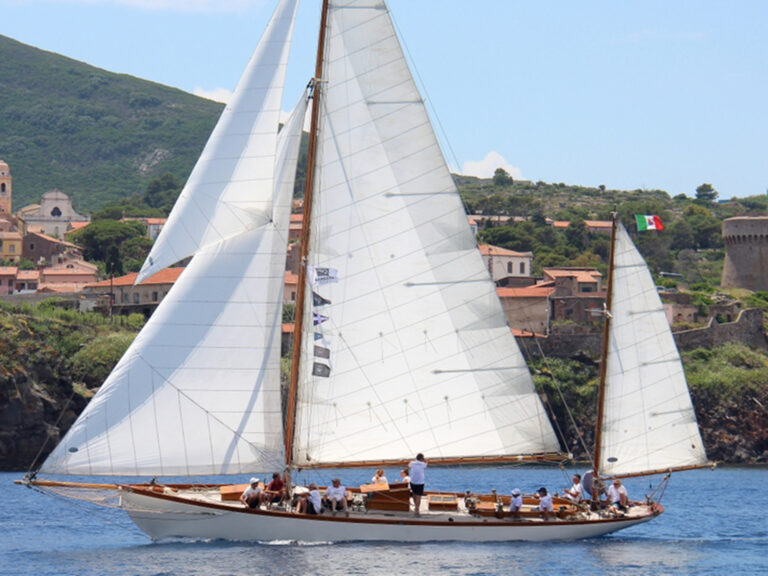
Celebrating a Classic
- Digital Edition
- Customer Service
- Privacy Policy
- Terms of Use
- Email Newsletters
- Cruising World
- Florida Travel + Life
- Sailing World
- Salt Water Sportsman
- Sport Fishing
- Wakeboarding
- Cruising Compass Media Advertising & Rates
- Blue Water Sailing
- Multihulls Today
- Subscribe Today

Fair Winds Charlie and Maureen Morgan
At the end of a long, imaginative and exceptional life, Charlie Morgan liked to paint seascapes, yachts sailing, Tampa Bay sunsets. Charlie left us on January 9. He was above all a Renaissance man, a creator of things, boats, designs, experiences and companies. And paintings. He also liked to fly planes. And, he deeply enjoyed his old friends, friends who were not shy about loving life. Of the things he created, the earliest sign of yachting prodigy was the race boat Paper Tiger, his first design commission, which won the SORC….in dim history…two years running. That success led to many opportunities, including the Morgan Yacht Company that he sold for a life changing profit, to building America’s Cup sails for an Olin Stephens America’s Cup campaign, to an America’s Cup campaign aboard his own design Heritage. And then he went on to build truly sound cruising trawlers for the power cruising clan. But this was all a long time ago. Perhaps what will be most remembered now is the Out Island 41, and bigger sister, Out Island 51, designs that defined the early charter business in the Caribbean and set the stage for truly roomy, easy-to-sail modern cruisers. It is probably poetic that Charlie Morgan’s wife Maureen died two days before he did. Together they leave a story of lives well led that are quietly and persistently inspirational. Fair winds old friends.

Sandy Parks
You might also like.
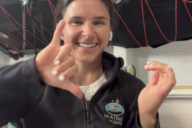
- She Asked, How Hard Can It Be? Boys Do It
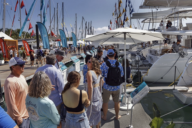
The Discover Boating Miami International Boat Show Opens Next Week
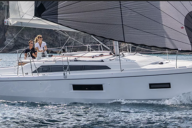
All New Beneteau Oceanis 37.1 Family Cruiser for 2024

Read the Summer-Fall Edition of Blue Water Sailing
Read the fall 2023 edition of blue water sailing, recent posts.

- Survey of the Week

- Introducing the New Twin-Keel, Deck Saloon Sirius 40DS
Please Visit Our Sponsor’s Webpages

- Media Advertising & Rates
Published by Blue Water Sailing Media, a division of Day Communications, Inc., Middletown, RI
Publisher & Editor: George Day
Blue Water Sailing Media publishes Blue Water Sailing magazine, Multihulls Today and other titles.
Cruising Compass Advertising Sales:
George Day, Newport, RI [email protected] 401-847-7612
- New 2024 Bavaria C50 Tour with Yacht Broker Ian Van Tuyl
© 2014 Blue Water Media. All rights reserved. | Admin

IMAGES
VIDEO
COMMENTS
Charley E. Morgan (November 17, 1929 - January 7, 2023) was a legendary American sailboat racer and designer. He was best known as the founder of Morgan Yacht Corporation. [1] [2]
Morgan Yachts designed and built the principal original watercraft for Disney World, a whole fleet of them, the largest of which is around 120 feet—submarines, the jungle cruise boats, the steam launches. In all, more than a hundred." The total number of sailboats that Charley Morgan designed is quite impressive. Fifty-three in all.
Designer and builder of the famed Morgan(USA) line of sailing yachts. Charles Morgan was already well known as a designer of one particularly sucessful racer, Paper Tiger, when he started building another of his designs, the TIGER CUB, on his own. But it wasn't until 1965 when he joined forces with long time friend, Bruce Bidwell, and began to built the sucessful MORGAN 34. This was followed ...
Charles Eugene Morgan Jr., 93, known to all as Charley, passed away last weekend, just a few hours after his wife Maurine died. ... In 1968, he sold Morgan Yacht Corporation to Beatrice Foods, providing funds for Morgan to design and build the wooden 12-meter yacht Heritage. He went on to found Heritage Yacht Corporation in 1975, producing ...
Charles Morgan, born November 17, 1929, in Chicago, now a yacht designer and consultant, hasn't built a sailboat in many years, but during the late 1960s and through the 1970s he was a formidable force in the exploding fiberglass sailboat industry. ... Of Morgan Yachts' many accomplishments, one that makes Charley positively beam is the ...
Charles Morgan. Designer and builder of the famed Morgan (USA) line of sailing yachts. Charles Morgan was already well known as a designer of one particularly sucessful racer, Paper Tiger, when he started building another of his designs, the TIGER CUB, on his own. But it wasn't until 1965 when he joined forces with long time friend, Bruce ...
Charley Morgan won the Star Class North American Championship and many other regattas. He was a sought-after crew on larger boats and became fascinated with finding ways to improve boat speed. In 1955 he teamed up with Charlie Hunt to design and build a 32-foot hard-chine yawl. The hull was coated with a new material called fiberglass.
For sailboat designer Charley Morgan, life's still a breeze. A self-portrait of Charley Morgan, who took up painting after his first wife died of cancer in 2001. By. Times Staff Writer. Published ...
Charles Morgan, (November 17, 1929-January 6, 2023), an icon in the world of sailing from the late 1940s, passed away at 93 years. ... Charlie left Morgan Yachts in 1972. He found Heritage Yacht ...
Charley Morgan 1929 -2023. By Dan Spurr, Apr 10, 2023. Charley Morgan steers his 12 Meter Heritage on Narragansett Bay. He liked to wear vests with big pockets, probably to hold all the big ideas he had. A bright, kindly bear of a man who seemed like he might live forever finally gave up the good fight on January 6, at age 93, reportedly just ...
Naval architect, ocean racer and yacht builder Charlie Morgan launched his career with back-to-back wins racing his own design 42-foot yawl in Southern Ocean Racing Circuit competition. Forming Morgan Yachts he used his racing experience to design fast bluewater cruisers for a line which quickly became one of the most popular of the era.
Charles Morgan's involvement in the company ended in 1972. Since that time, the company was passed from one corporate entity to another, until it came into the hands of Catalina Yachts in 1984. Catalina continued with a few models, including the OUT ISLAND 41, before the Morgan name was retired.
Remembering Charles Morgan, founder of Morgan Yachts, creator of the Morgan Out Island 41, builder of floating Disney World attractions, only man to design, build, and skipper an America's Cup boat. ... Morgan Yachts designed and built the principal original watercraft for Disney World, a whole fleet of them, the largest of which is around 120 ...
The Morgan 38 was designed in 1969 by Charlie Morgan. He had founded Morgan Yacht Company in St. Petersburg, Florida, in 1965. The Morgan 34 was his first production model. A hometown boy, he had made a name for himself in the 1960 and 1961 Southern Ocean Racing Conference (SORC), winning with a boat of his own design called Paper Tiger. While ...
The pair headed down to Florida to collaborate with Charlie Morgan of Morgan Yachts. They decided on a design that was much more beamy than that of your typical monohull at the time. And of course, for the charter fleet, the yachts were an instant sensation. "The boat was a Morgan Out Island 41.
Celebrate Charley Morgan's contributions to all of the many walks of life. Sailing ~ Art ~ Community Leadership ~ Friendship ~ Philanthropy Location: St. Petersburg Yacht Club Date: February 28th, 2023 Time: 5:00 - 7:00 pm Light Snacks ~ Cash Bar RSVP at: www.spyc.org Call 727-892-6882 or click the link below: Click Here
Charles Morgan's involvement in the company ended in 1972. Since that time, the company was passed from one corporate entity to another, until it came into the hands of Catalina Yachts in 1984. Catalina continued with a few models, including the OUT ISLAND 41, before the Morgan name was retired. Years in Business: 1963 - 1992.
Charlie Morgan of Morgan Yachts has passed away. I met Charley and Sally, his first wife, and actually bought a Pearson 30 sailboat from her through her brokerage. Charley and Sally came to Ocala to give a talk at one of our Buccaneer meetings. ... Eight Bells: Charles Morgan Published on January 9th, 2023 Charles Morgan, (November 17, 1929 ...
Charles "Charley" Morgan - Enthusiastic, inquisitive and industrious, Morgan spent his long career making sails, flying airplanes, designing and building boats with his Morgan Yacht Corporation. Many of the over 1,000 Morgan Out Island series cruising yachts are still on the water today.
FOUNDER, with Bruce Bidwell, of The MORGAN YACHT CORPORATION as its President, Chief of Design and New Product Development ... in 1968 merged Morgan Yacht into the Multi-National BEATRICE FOODS Co ...
At the end of a long, imaginative and exceptional life, Charlie Morgan liked to paint seascapes, yachts sailing, Tampa Bay sunsets. Charlie left us on January 9. ... That success led to many opportunities, including the Morgan Yacht Company that he sold for a life changing profit, to building America's Cup sails for an Olin Stephens America ...
The whaleship Charles W. Morgan is the second oldest ship in America; second only to the USS Constitution. She chased whales across the globe during a profitable eighty-year career that ended in 1921. In 1941, Mystic Seaport acquired the Morgan and put her on display in Mystic, CT, where she has since welcomed over 20 million visitors.
Charles Morgan: Builders: Heritage Yacht Corp. (USA) Download Boat Record: Notes. Scaled down verson of MORGAN OI 41, from the same mold as the WEST INDIES 36 and with the same rig. ... For boats with adjustable keels (centerboards, daggerboards, lifting and swing keels), Draft (max) is with the board down. Draft (min) is with the board up.